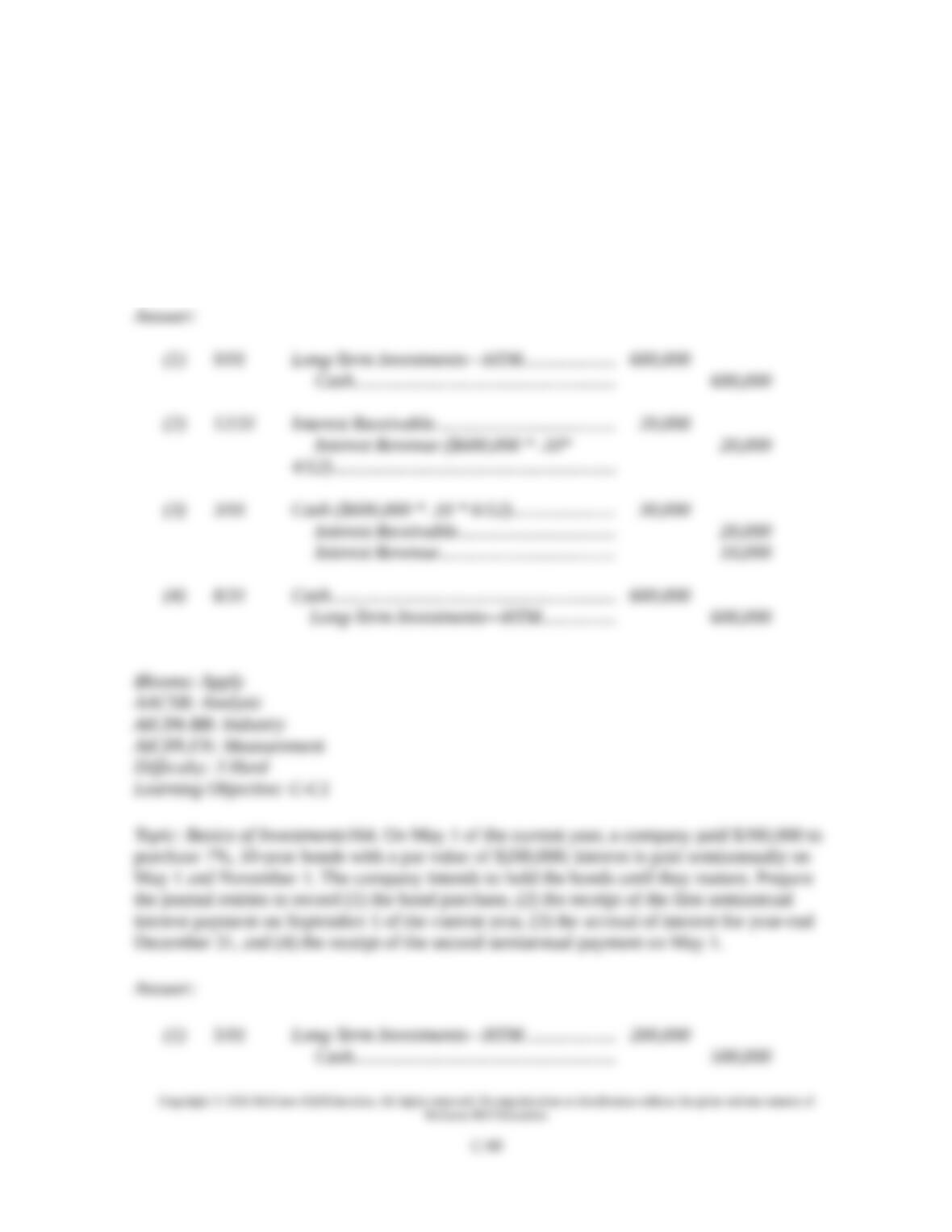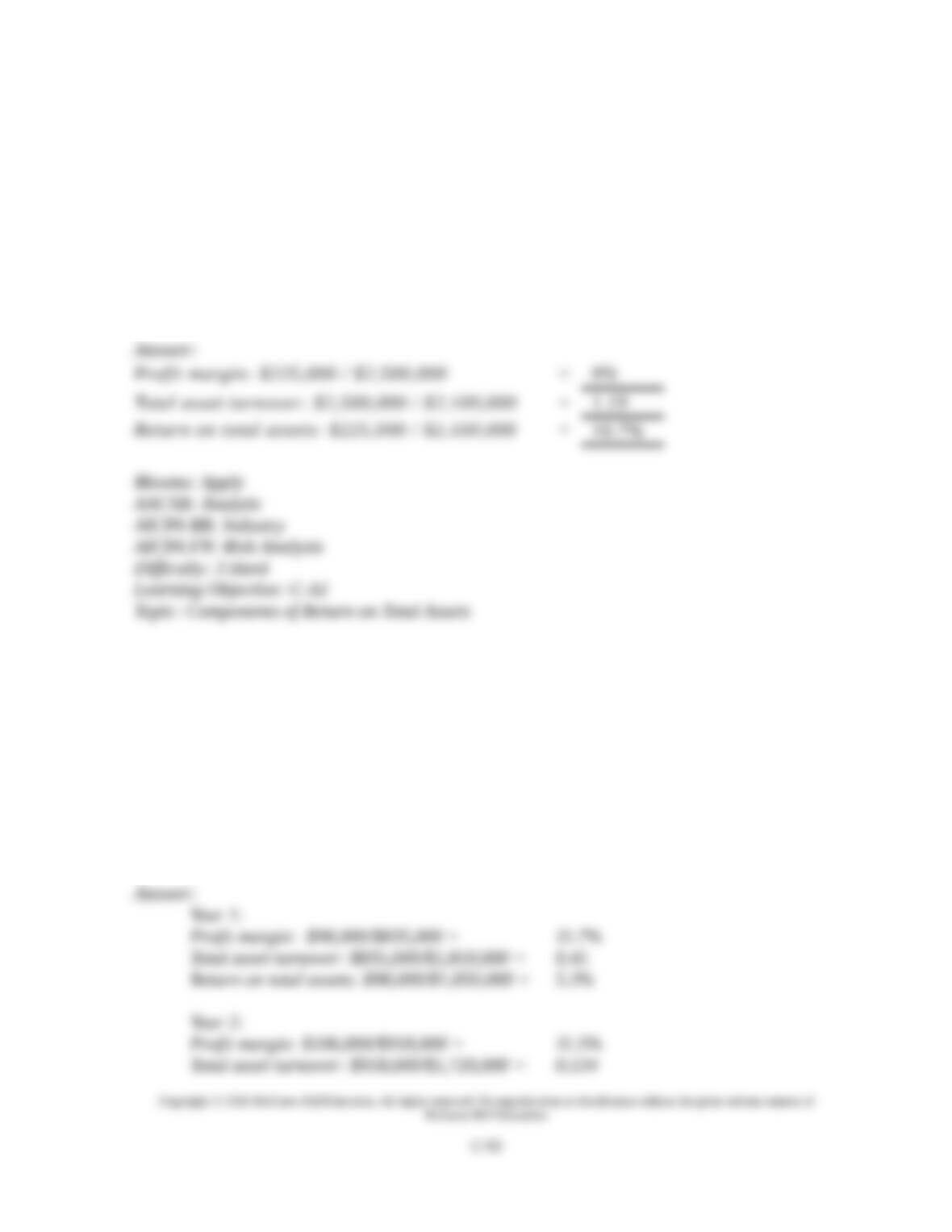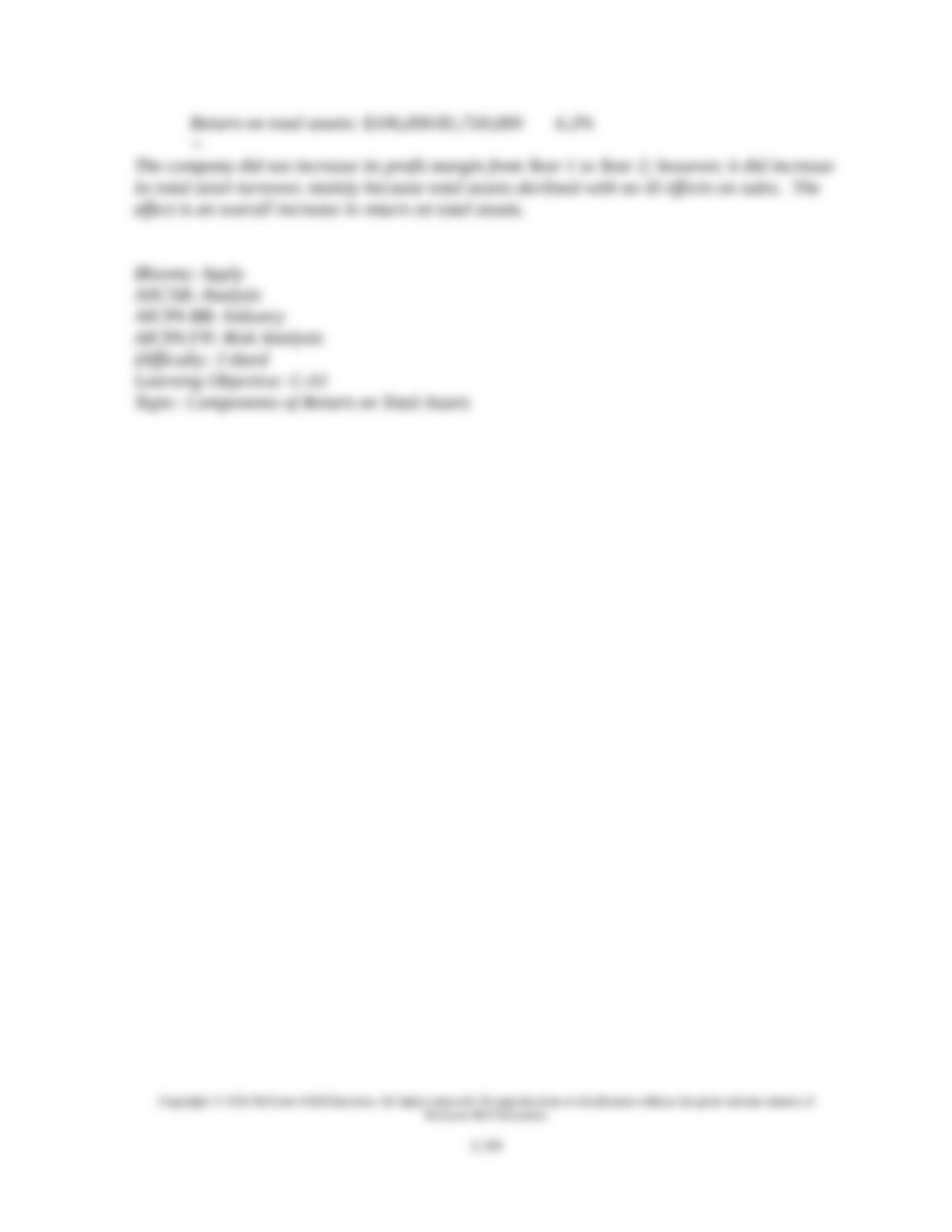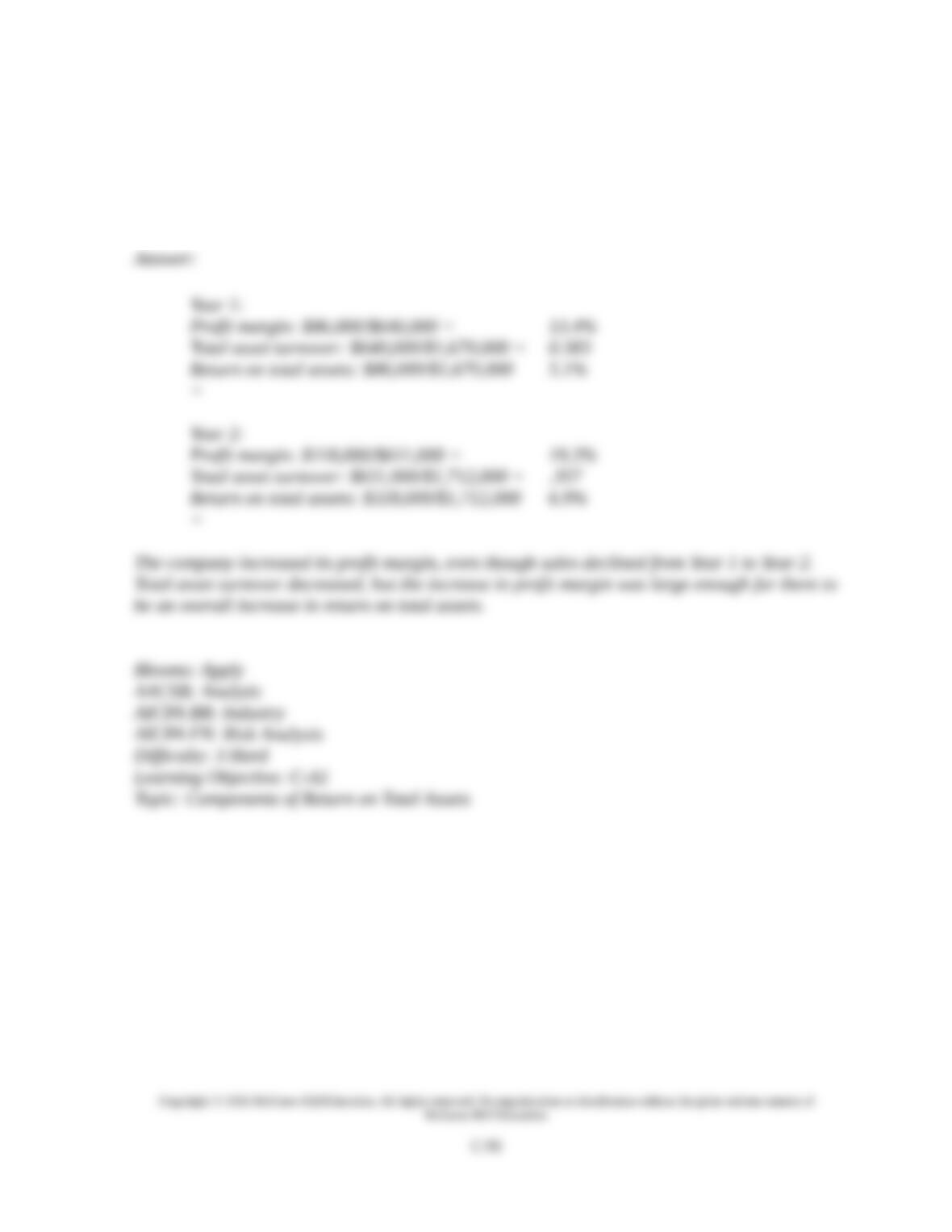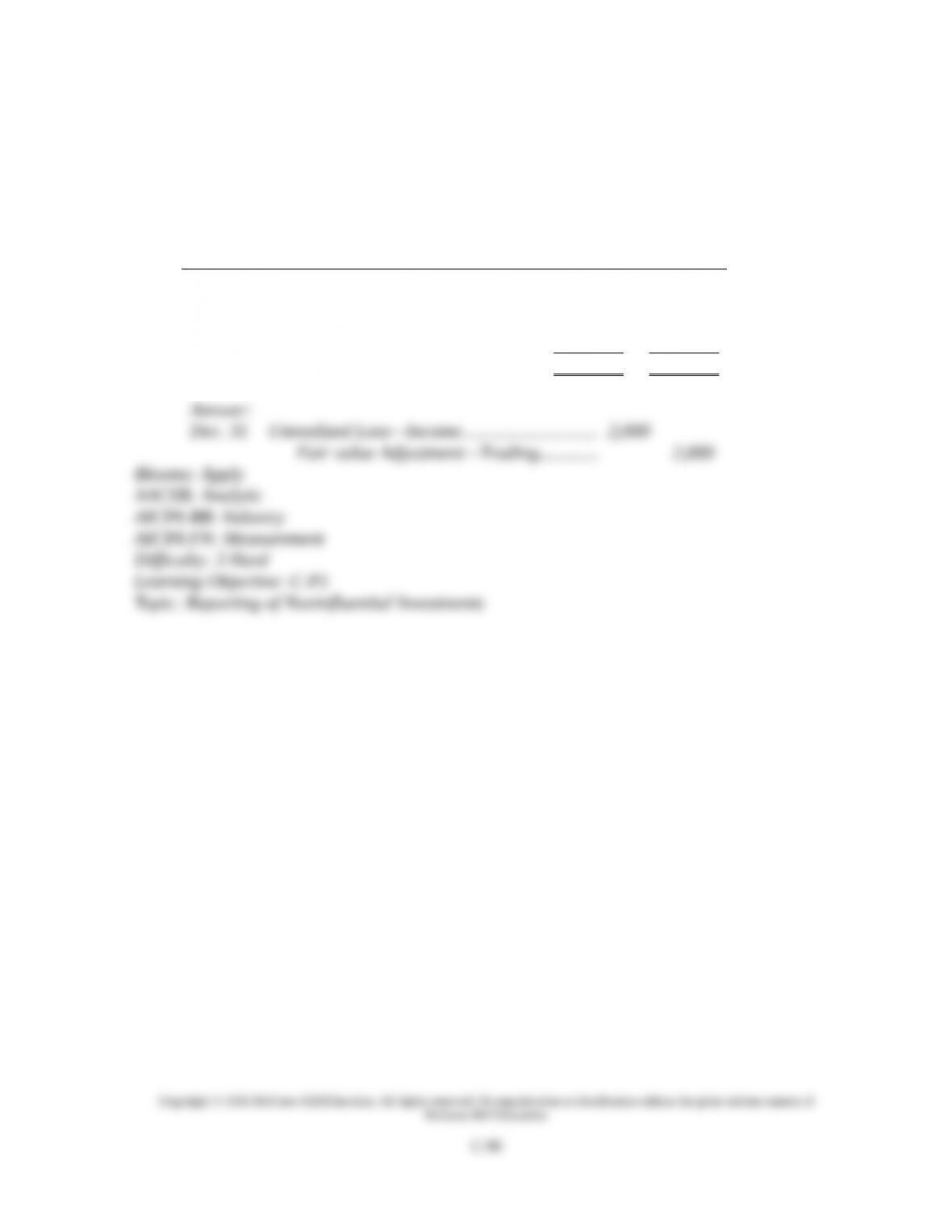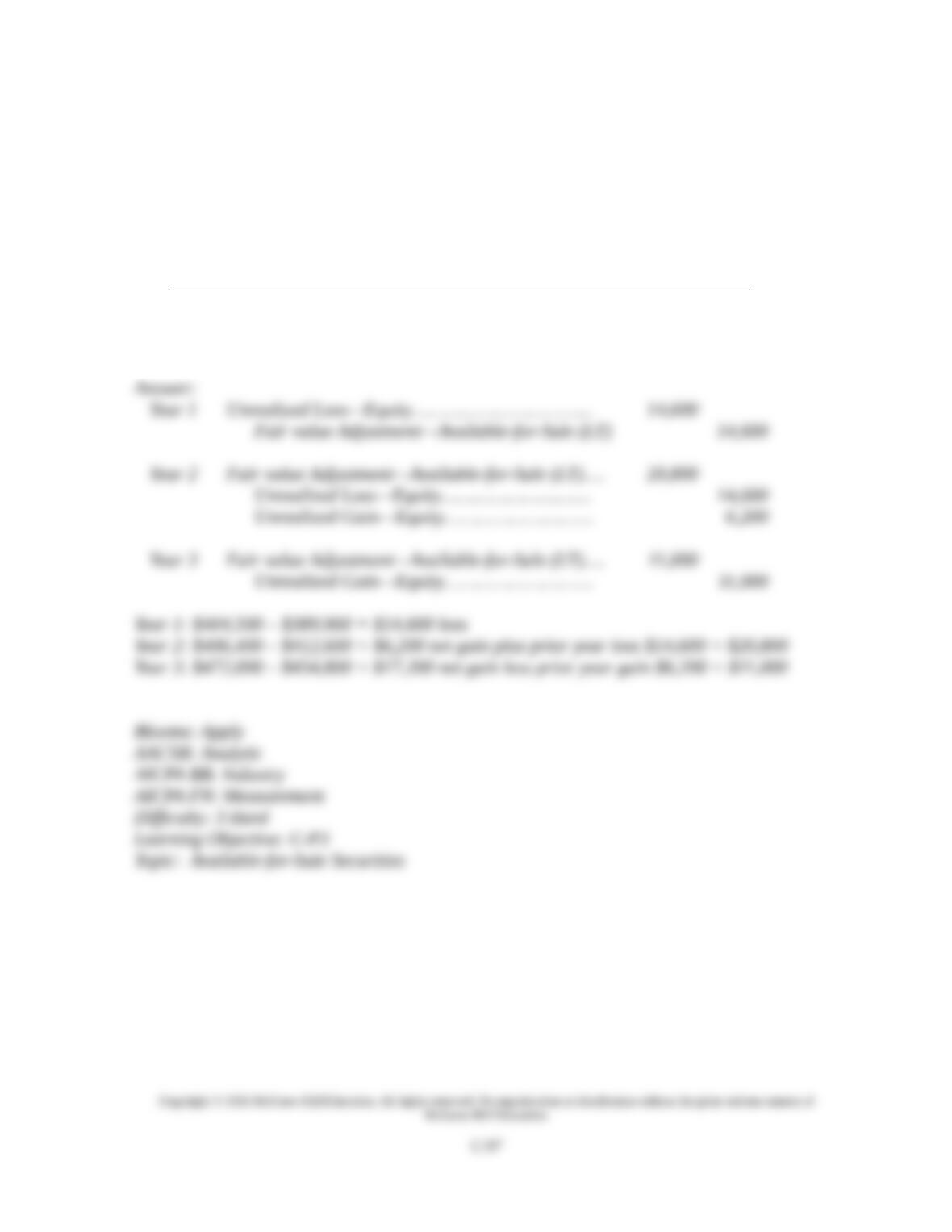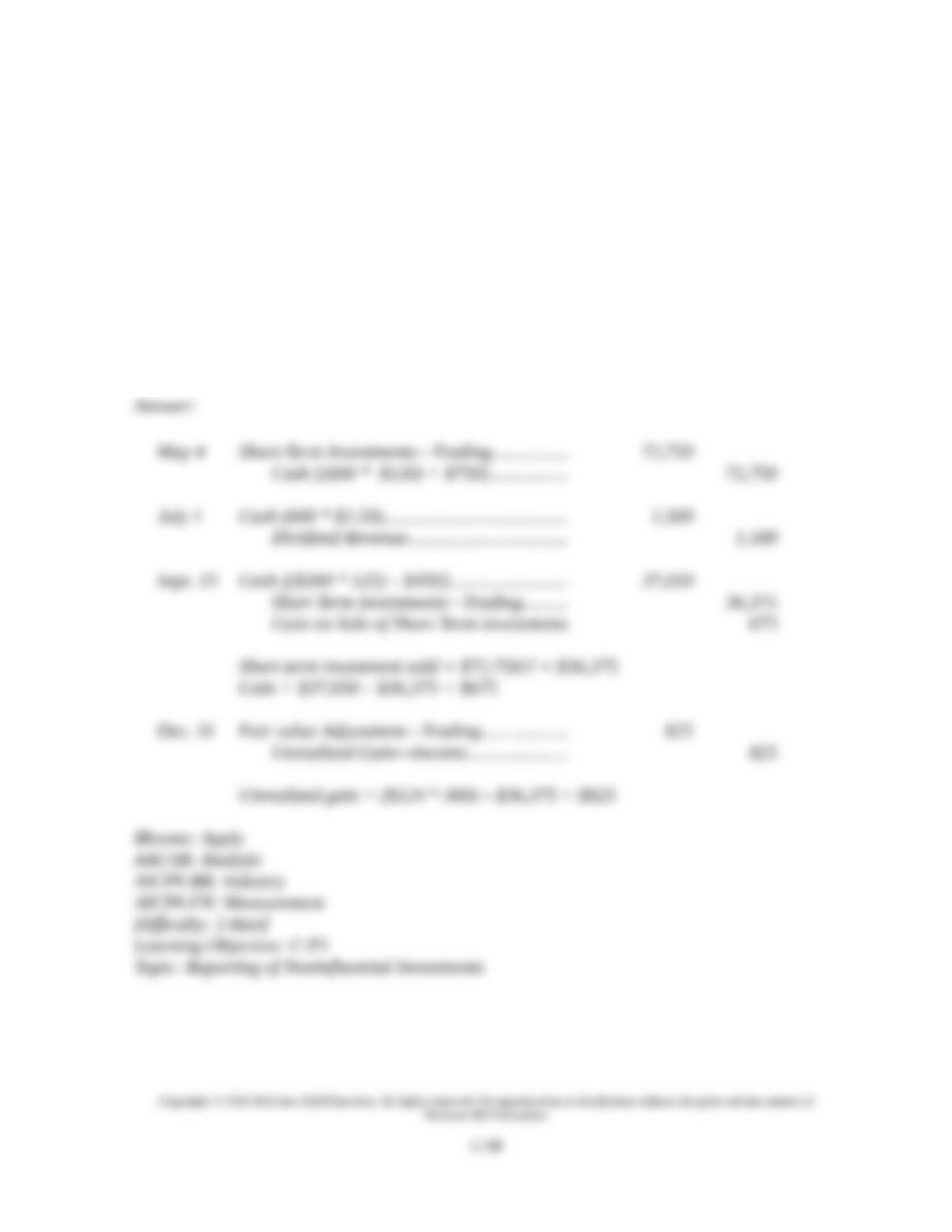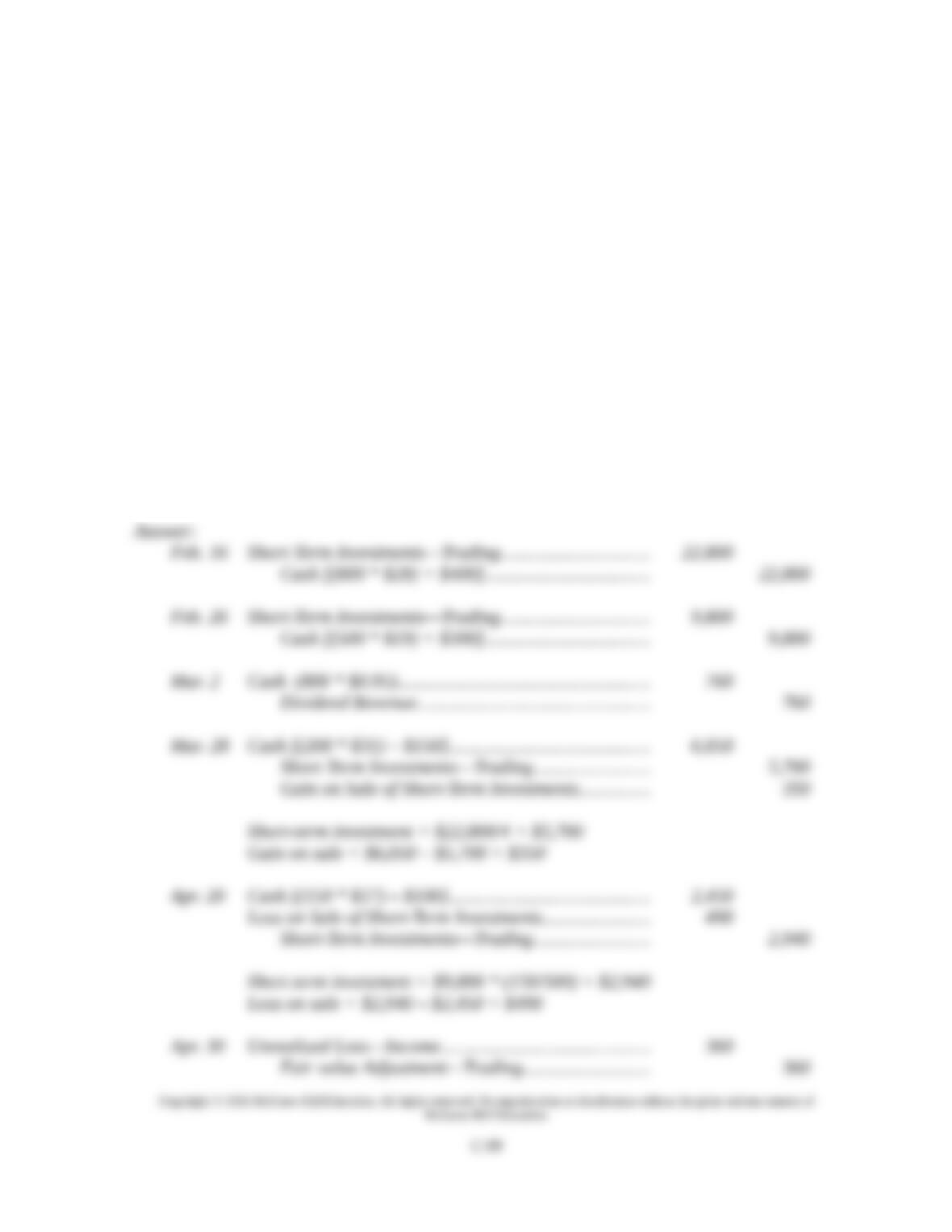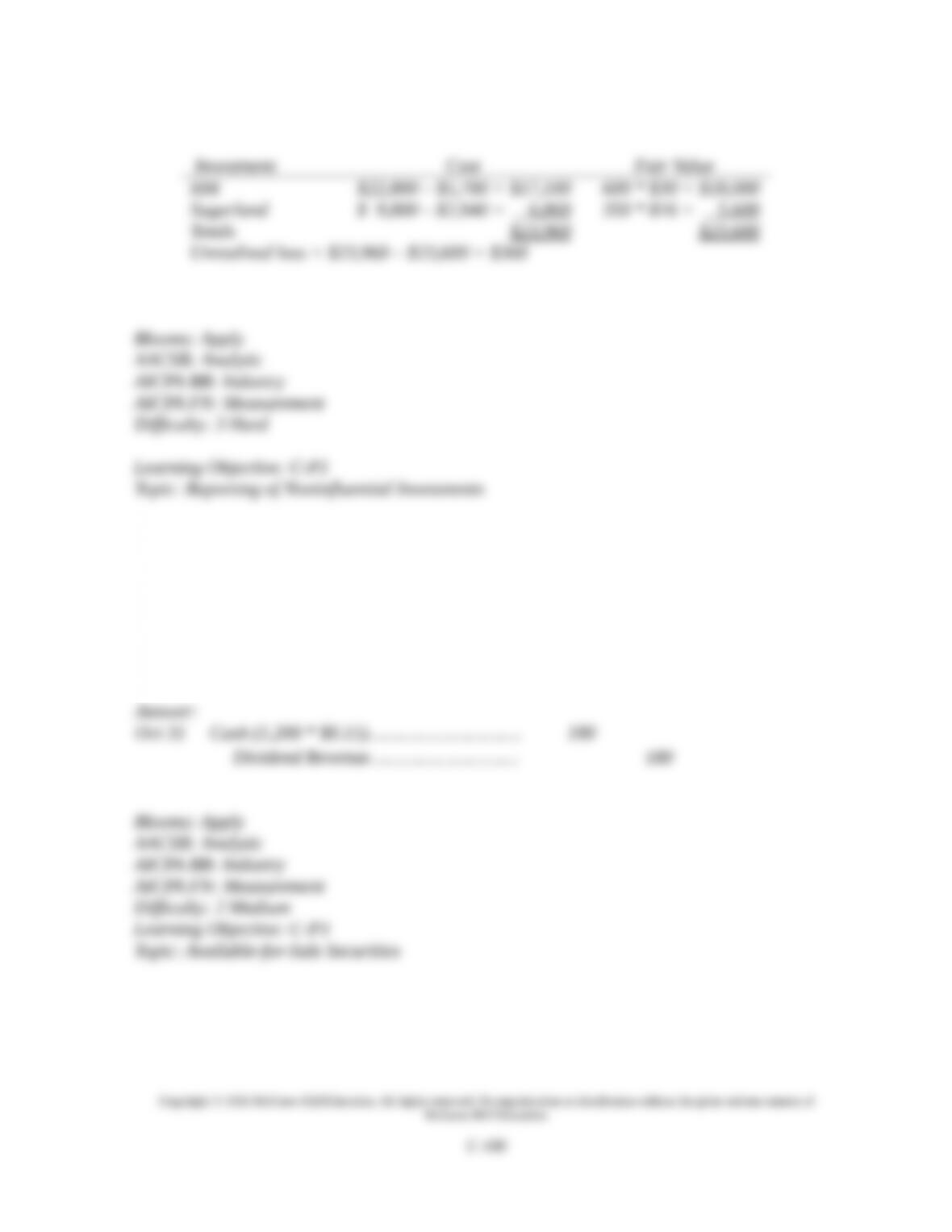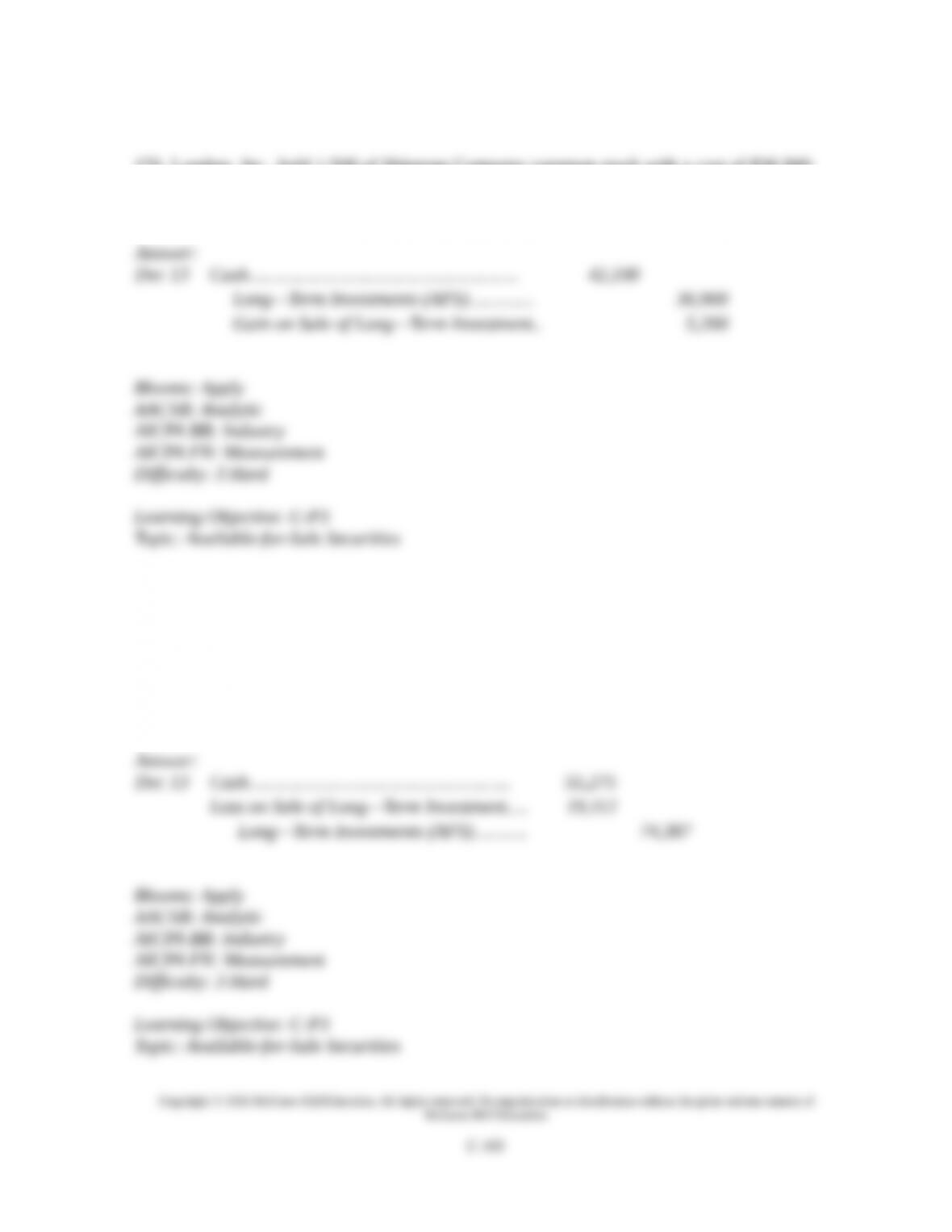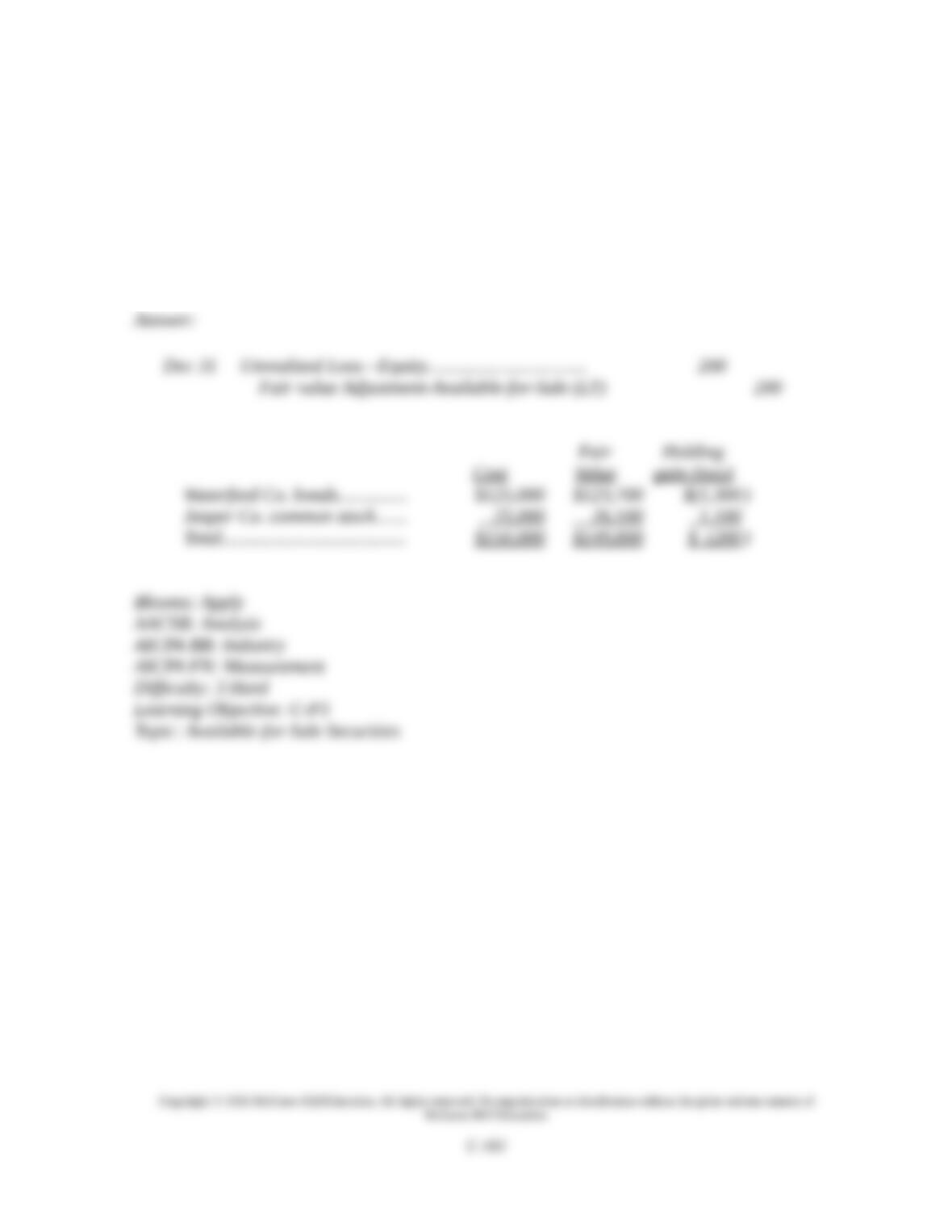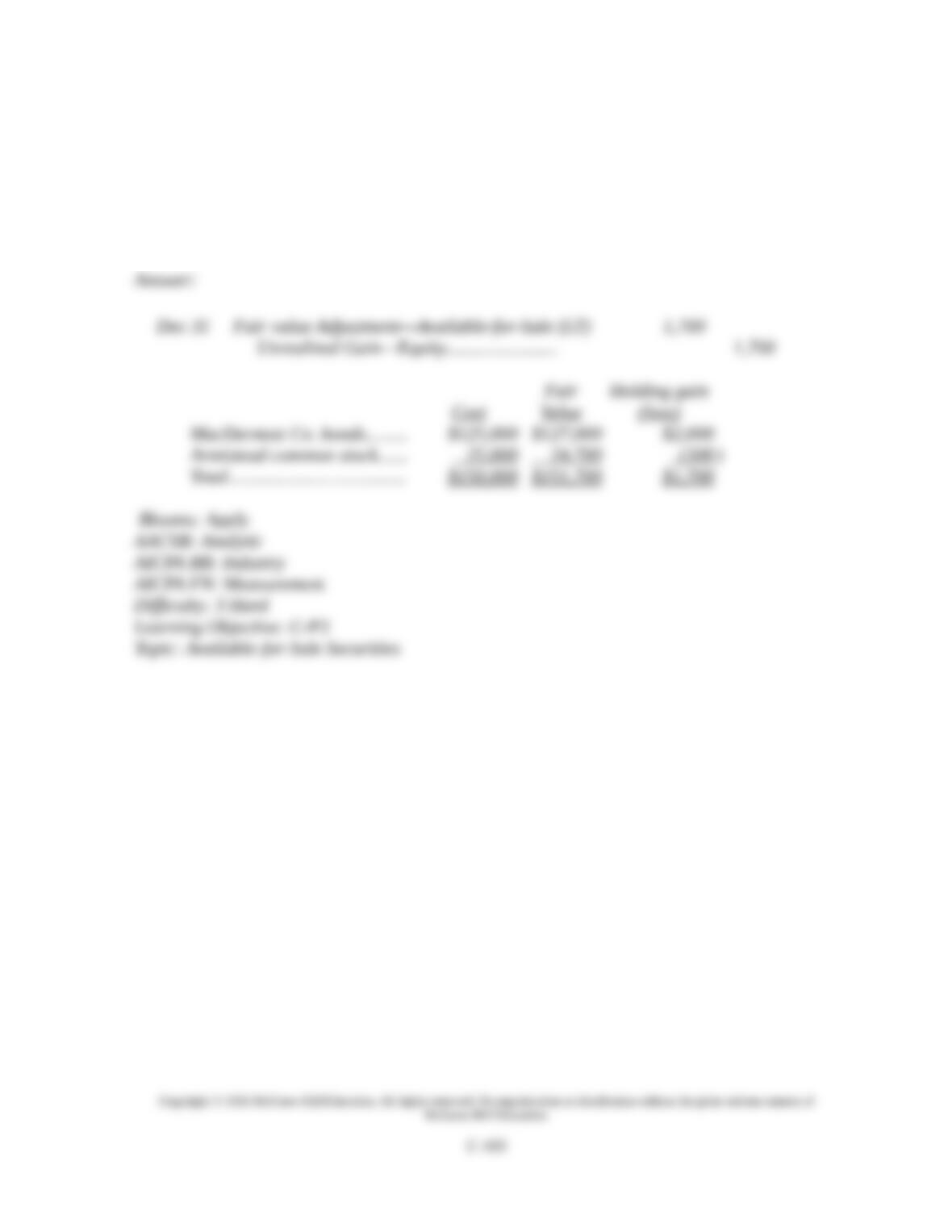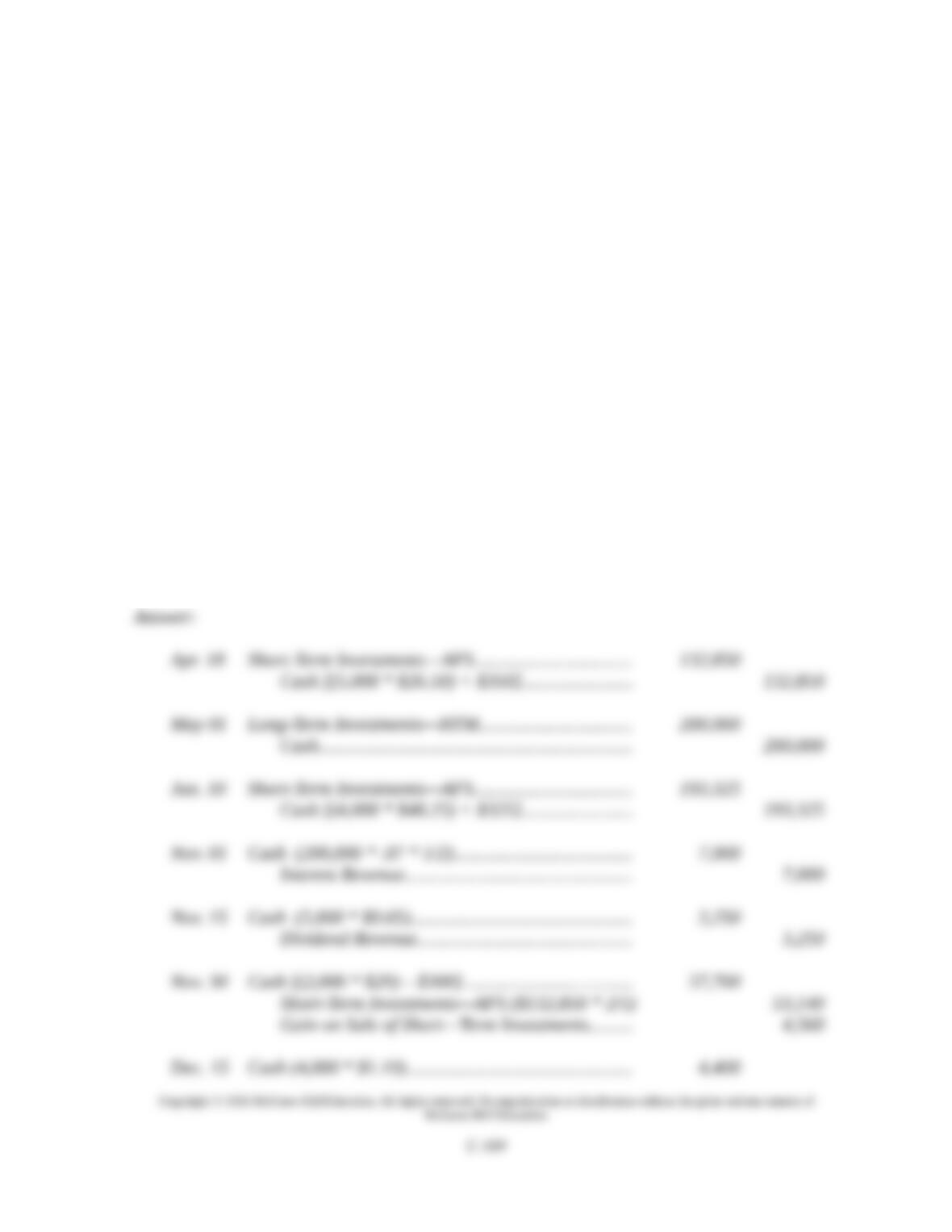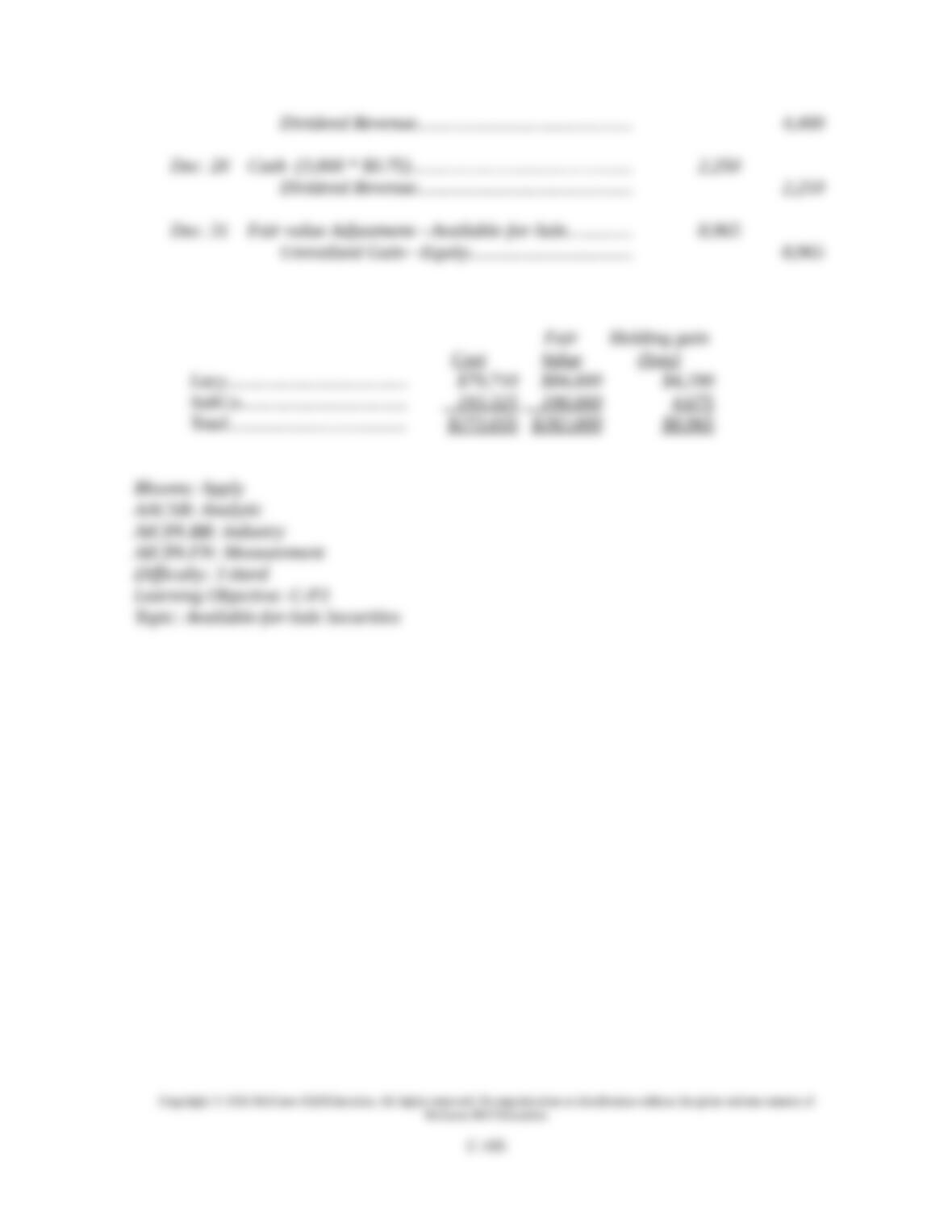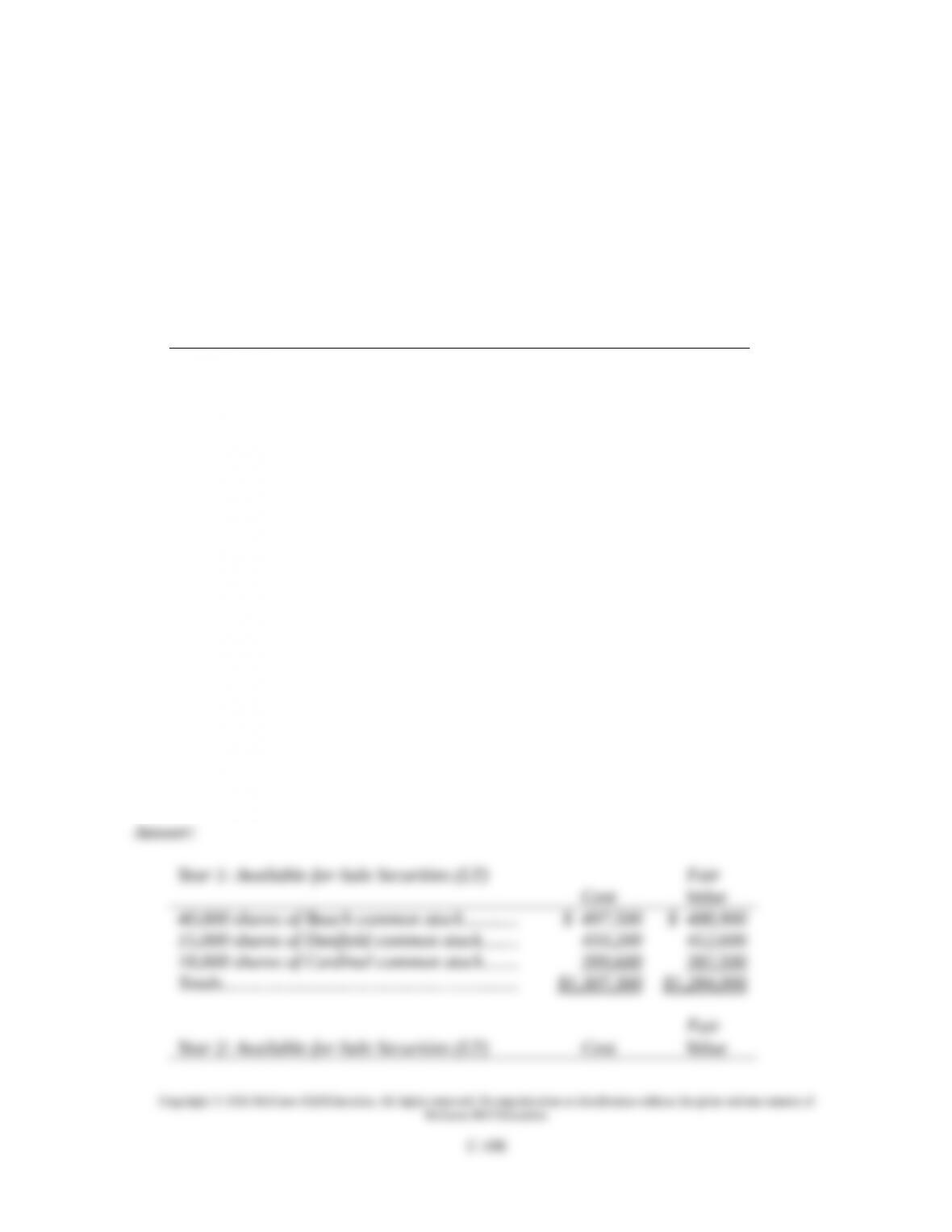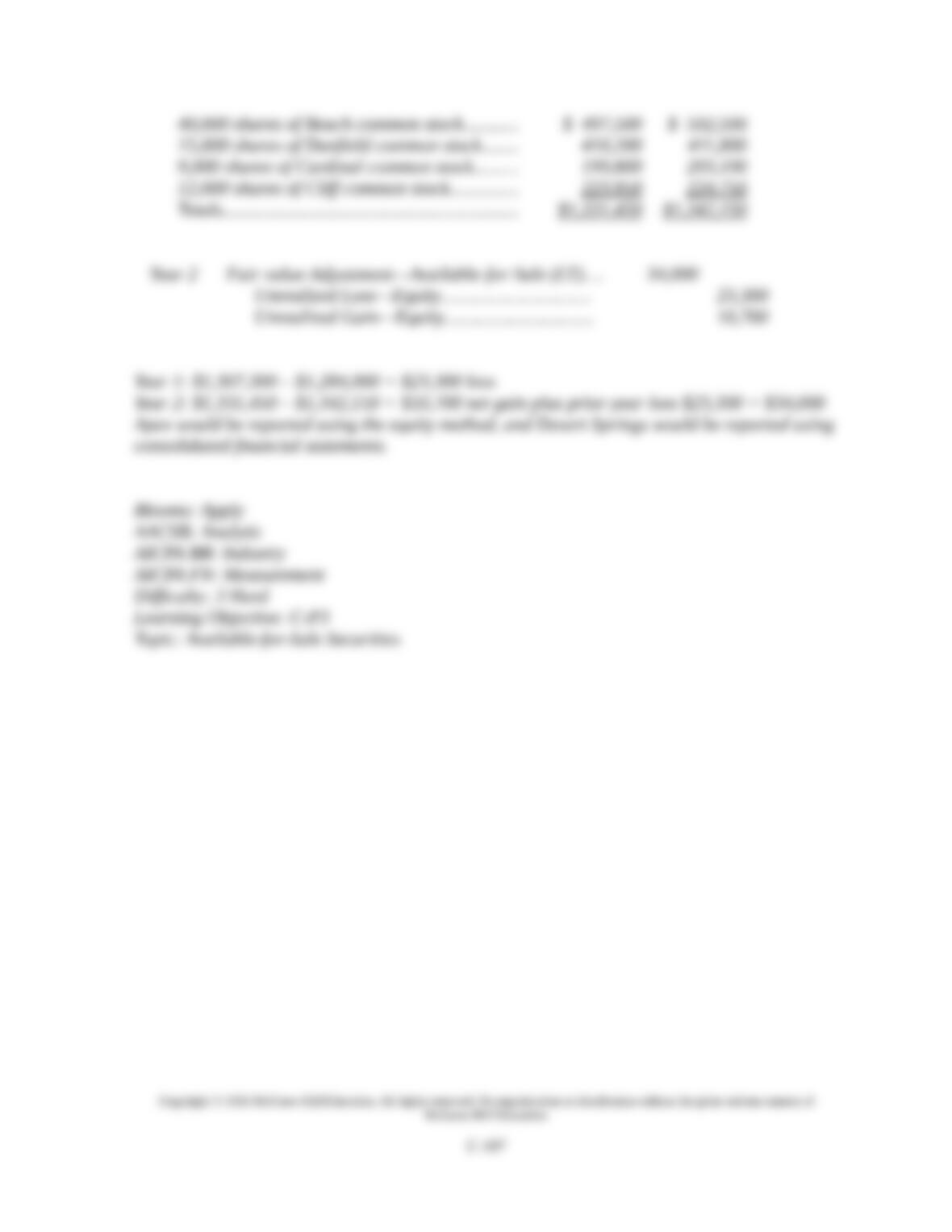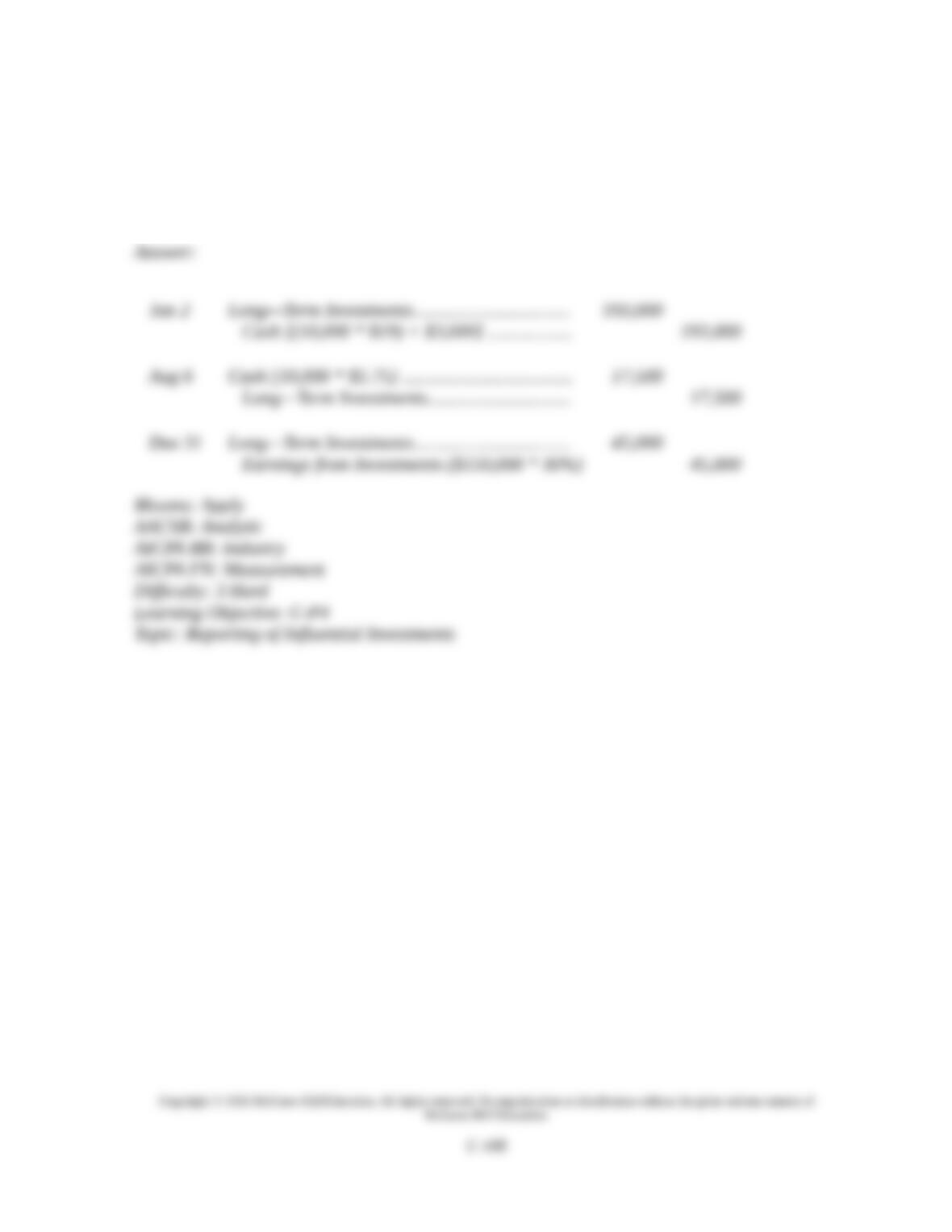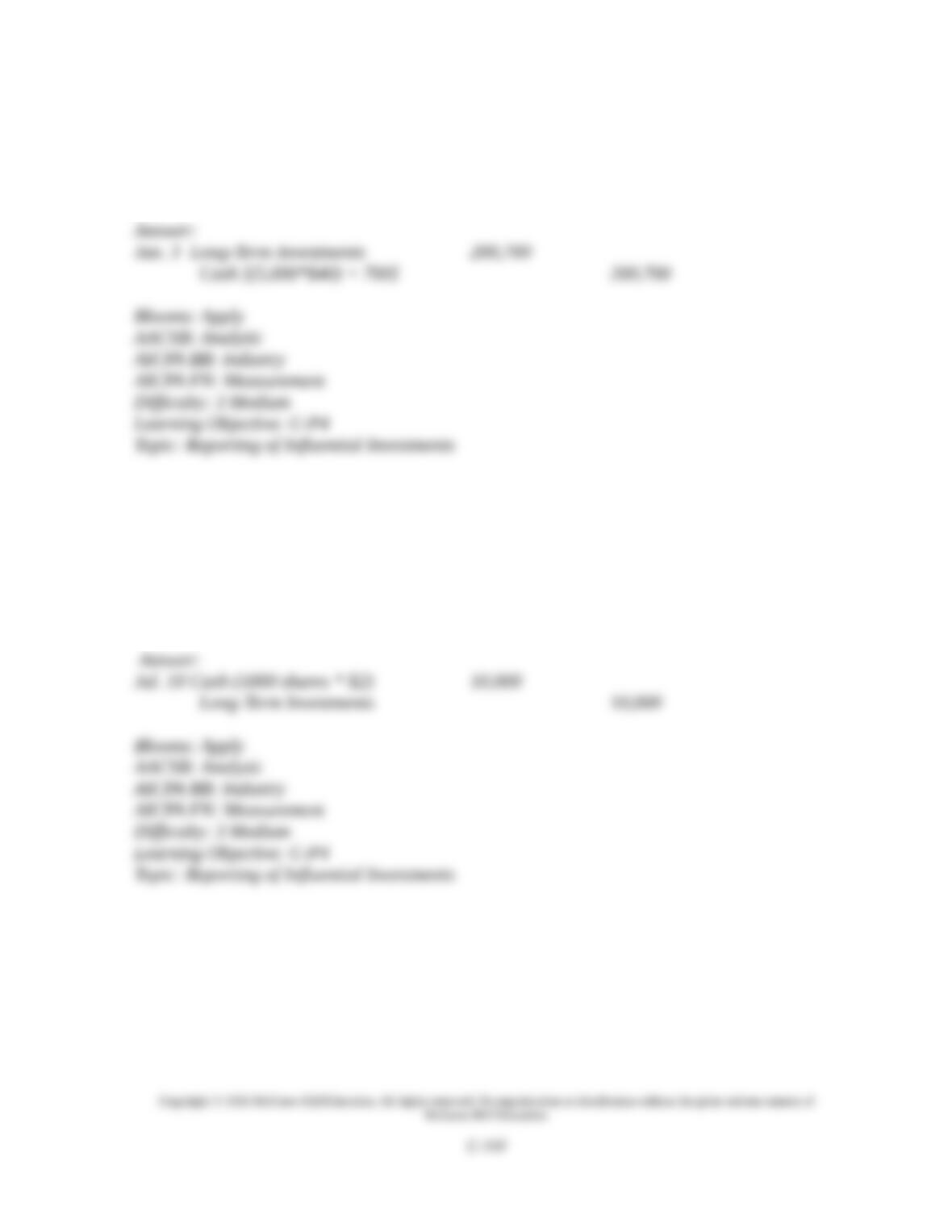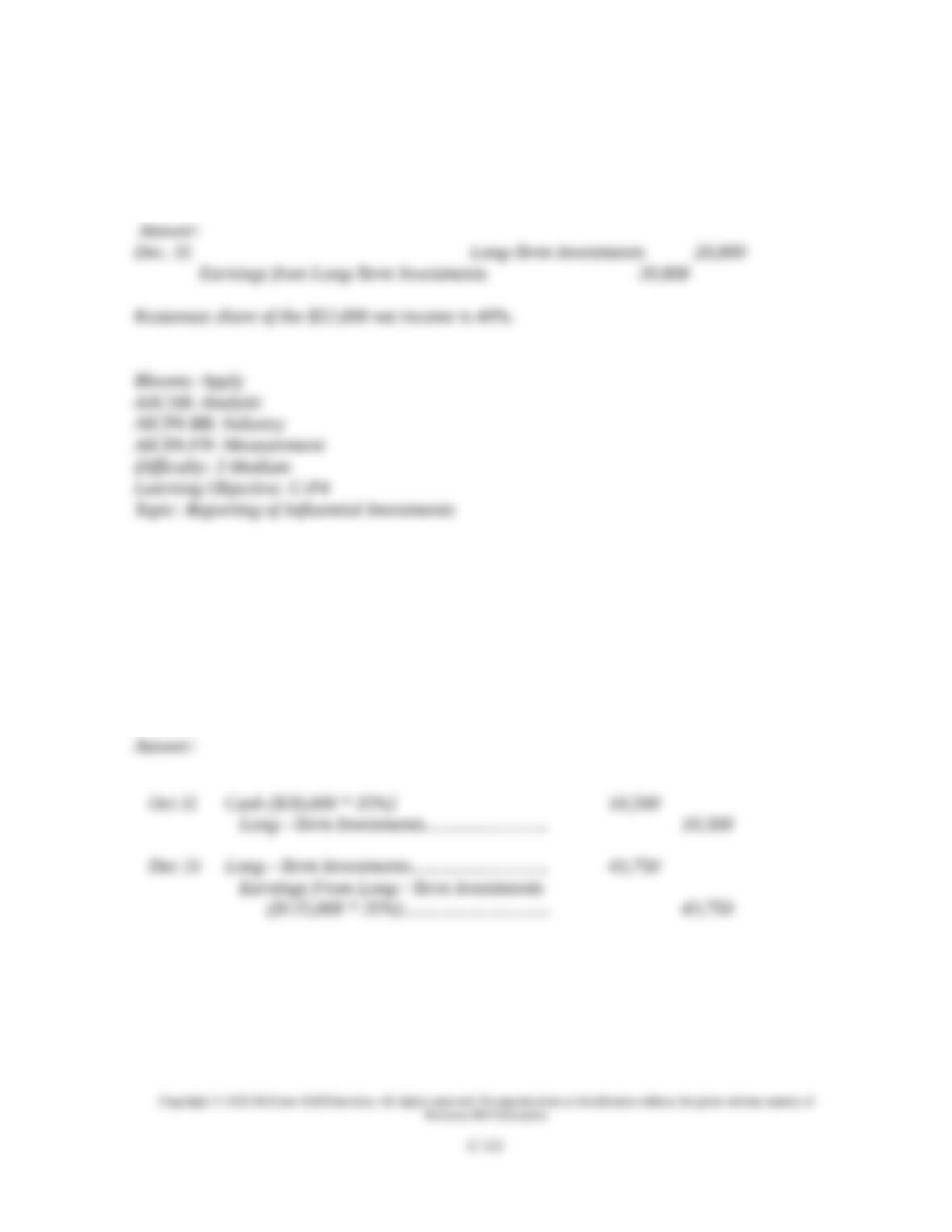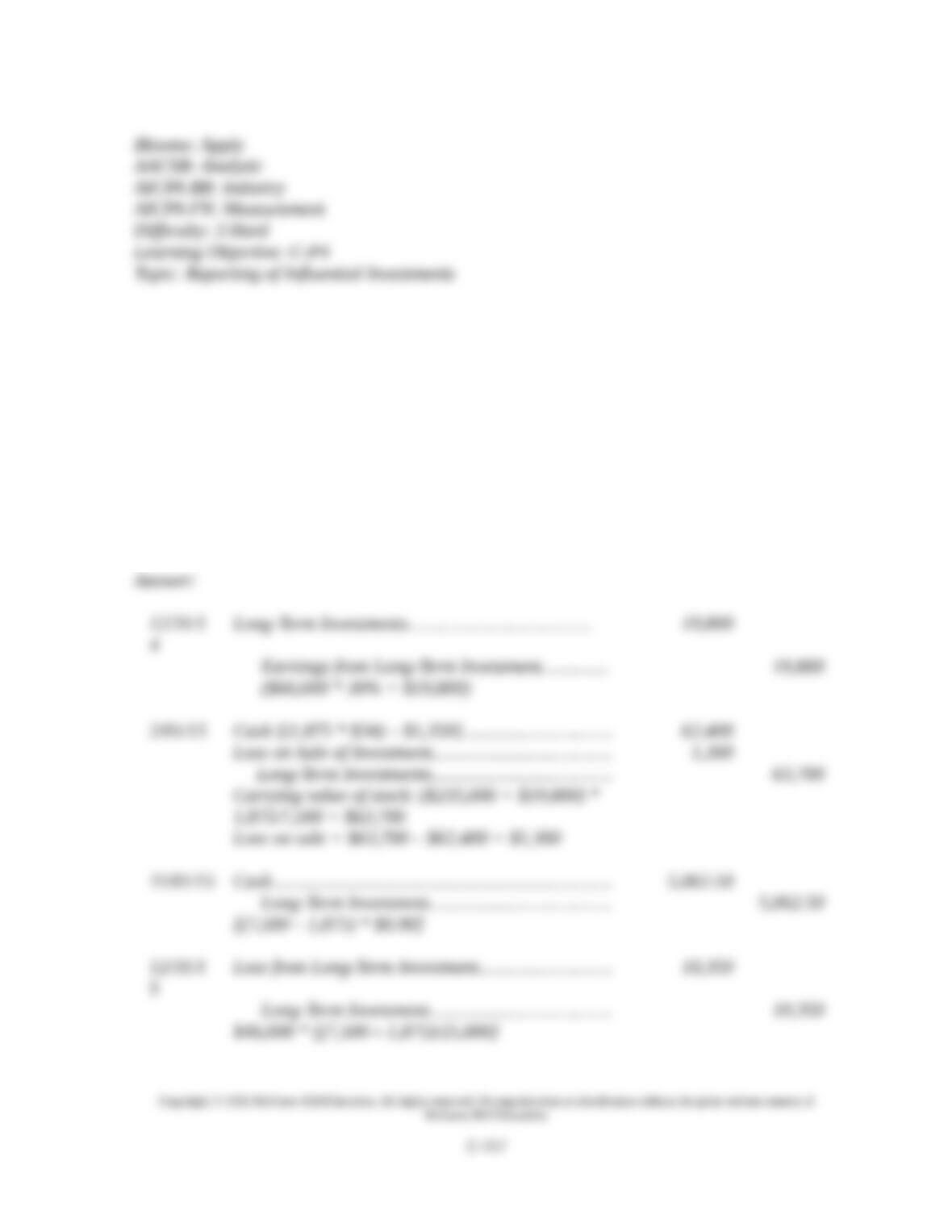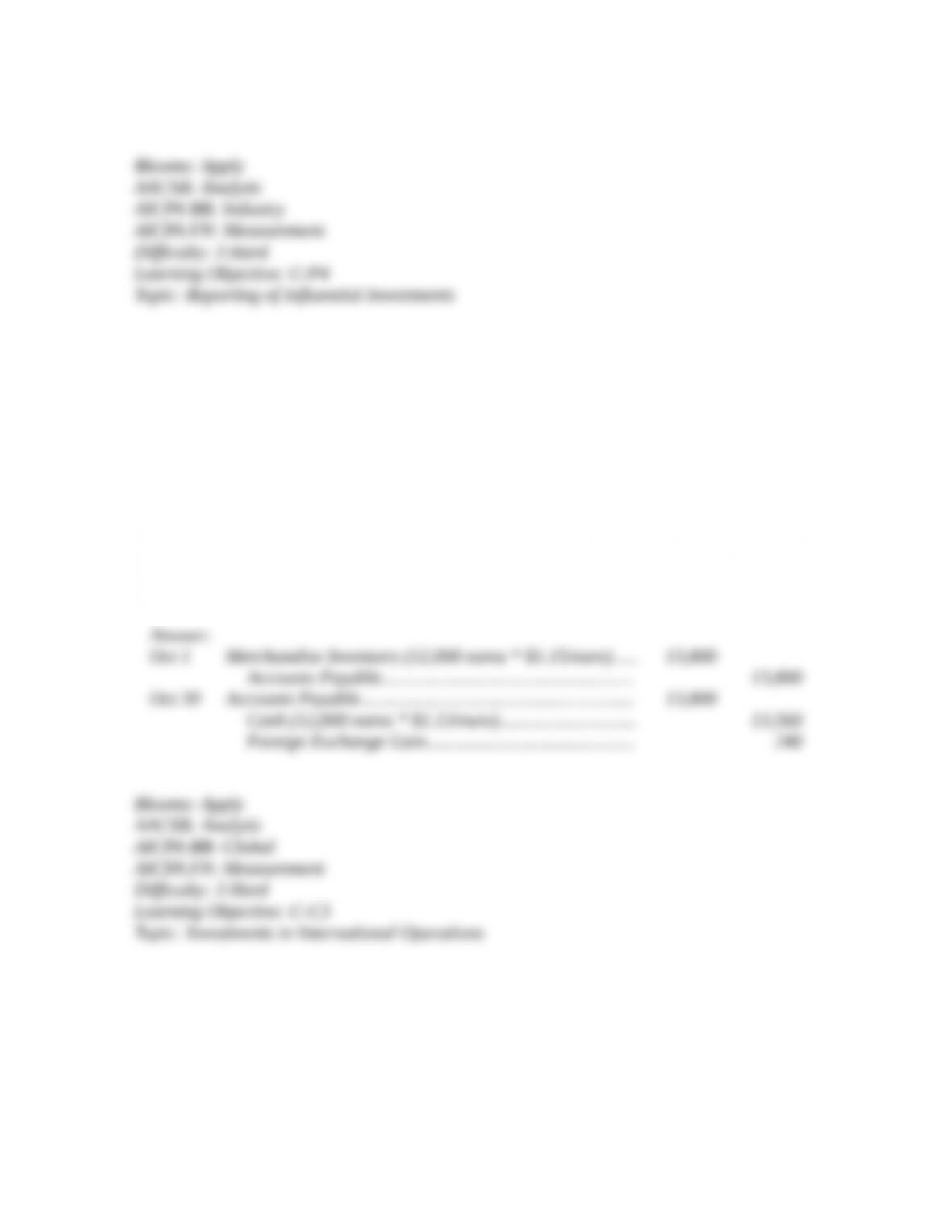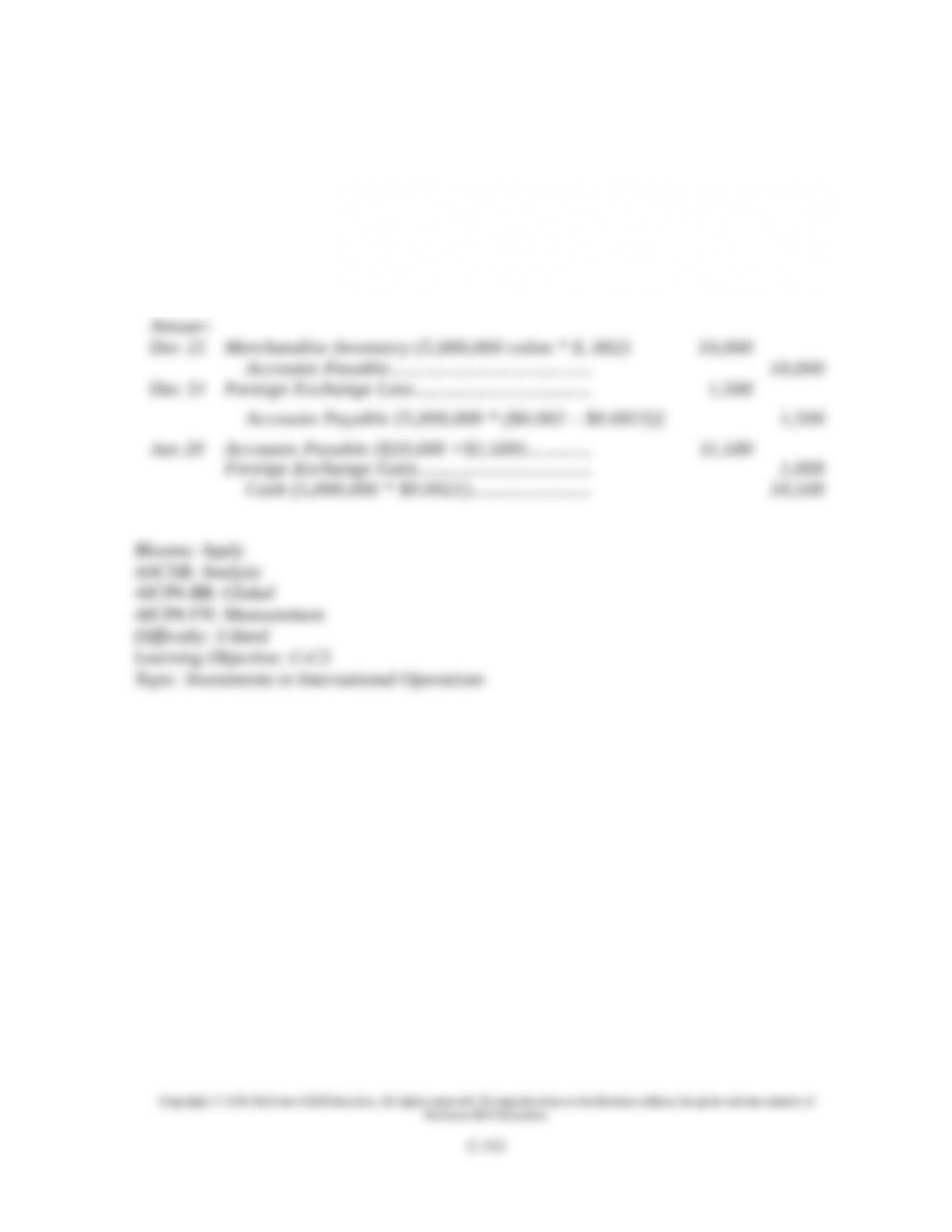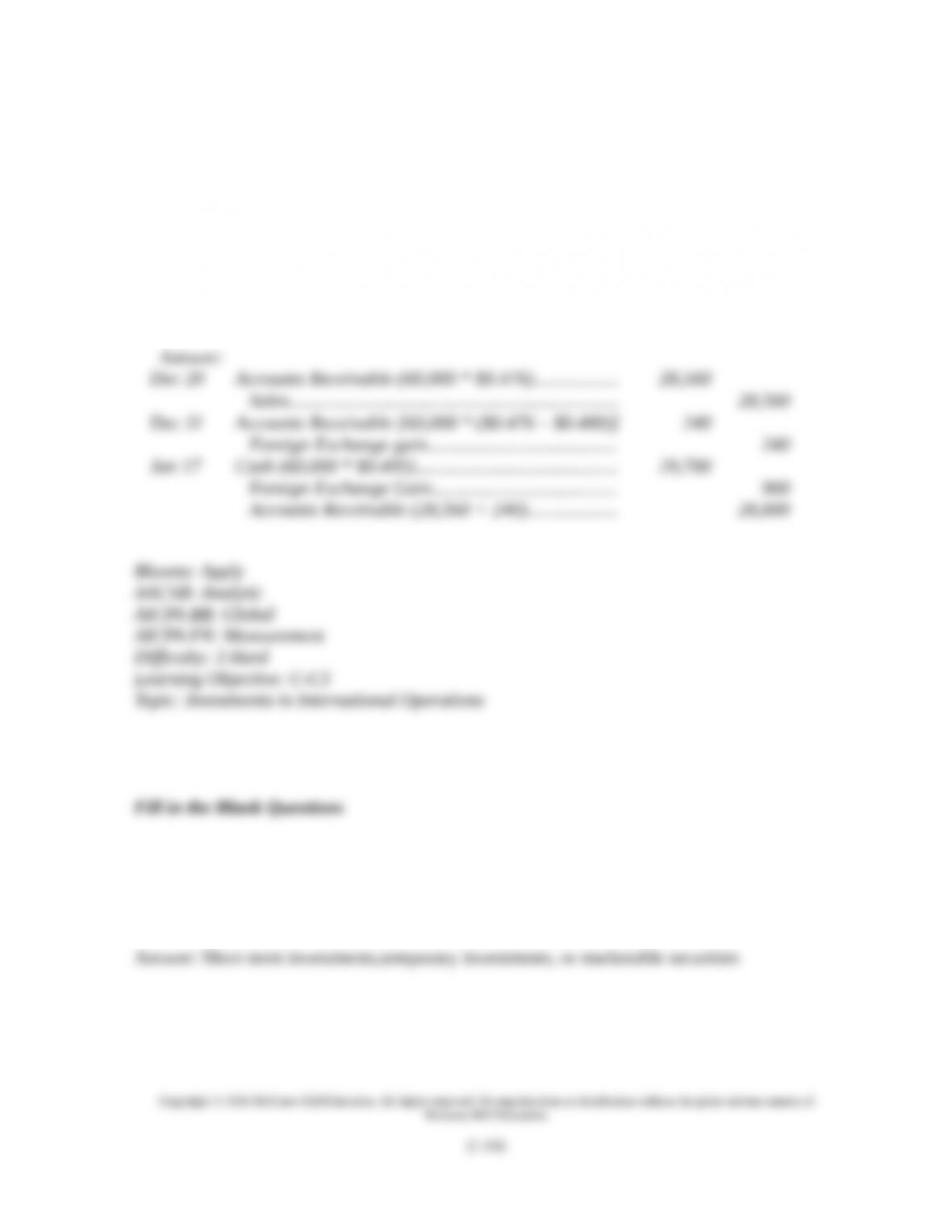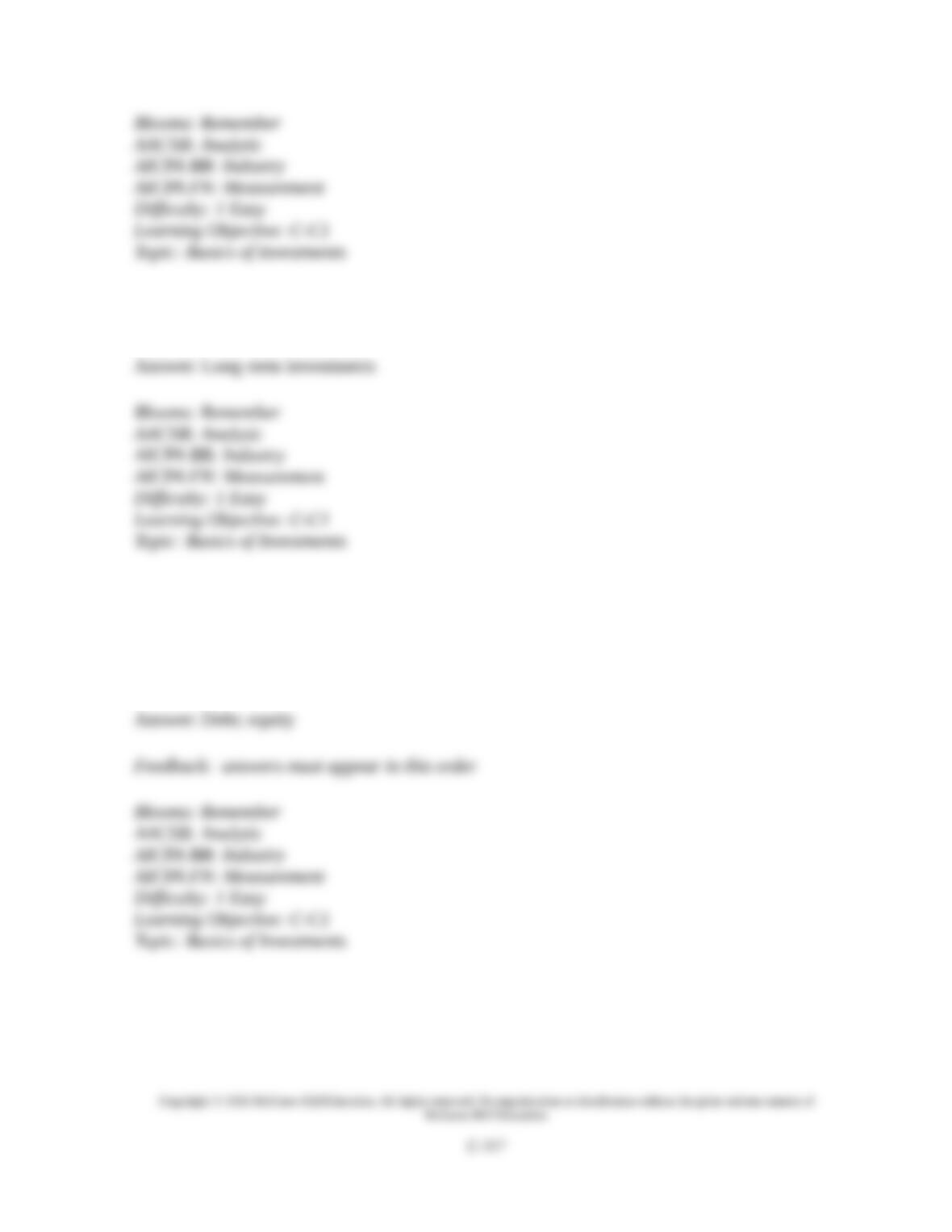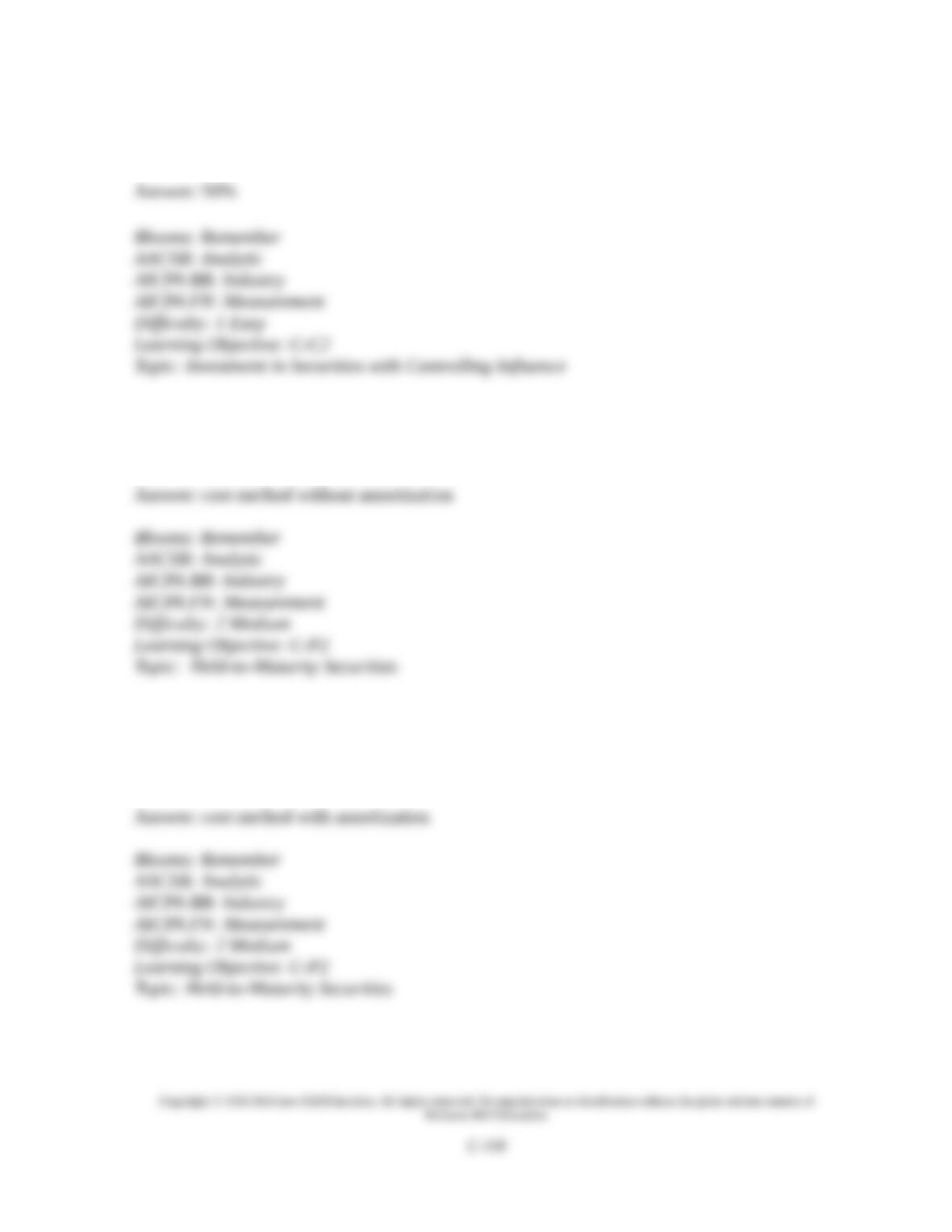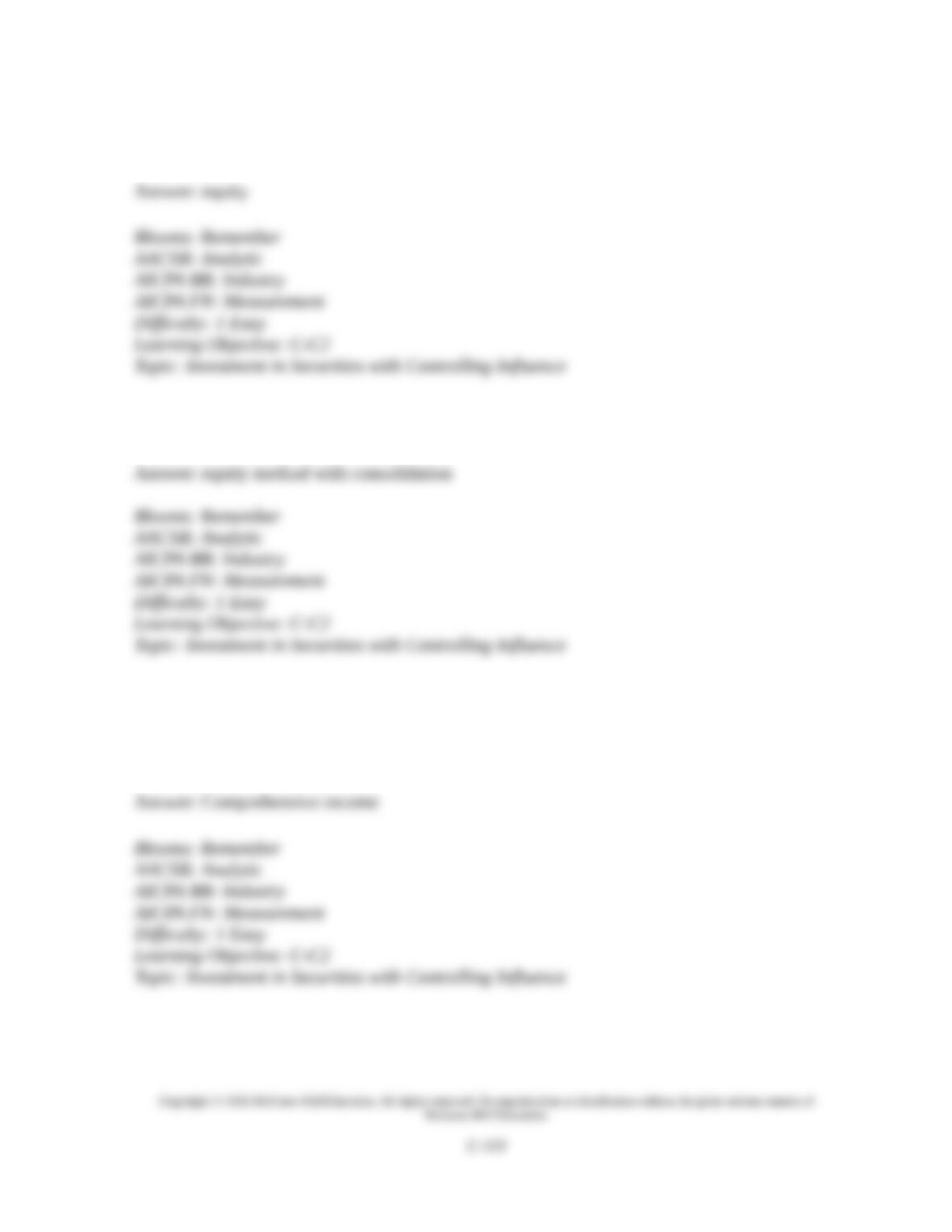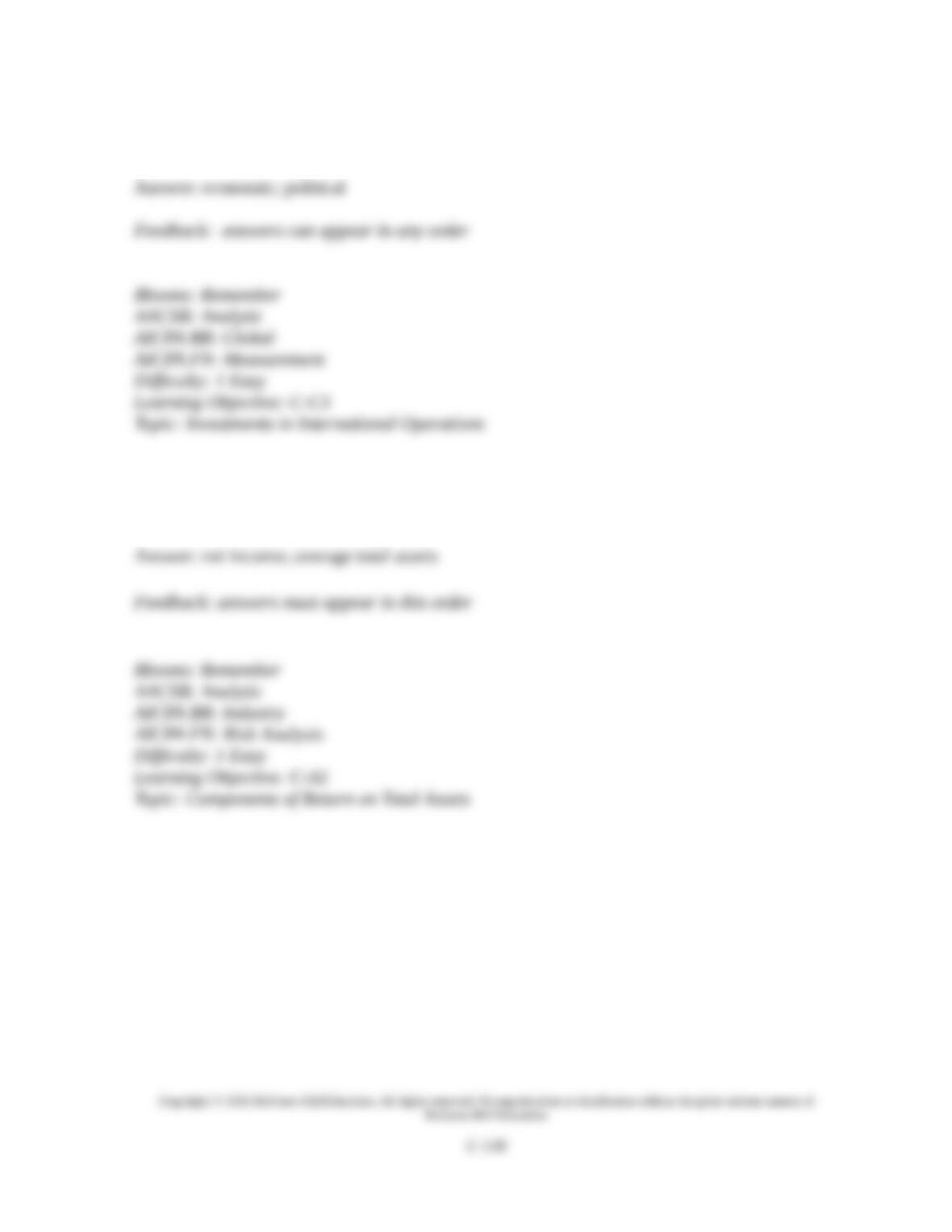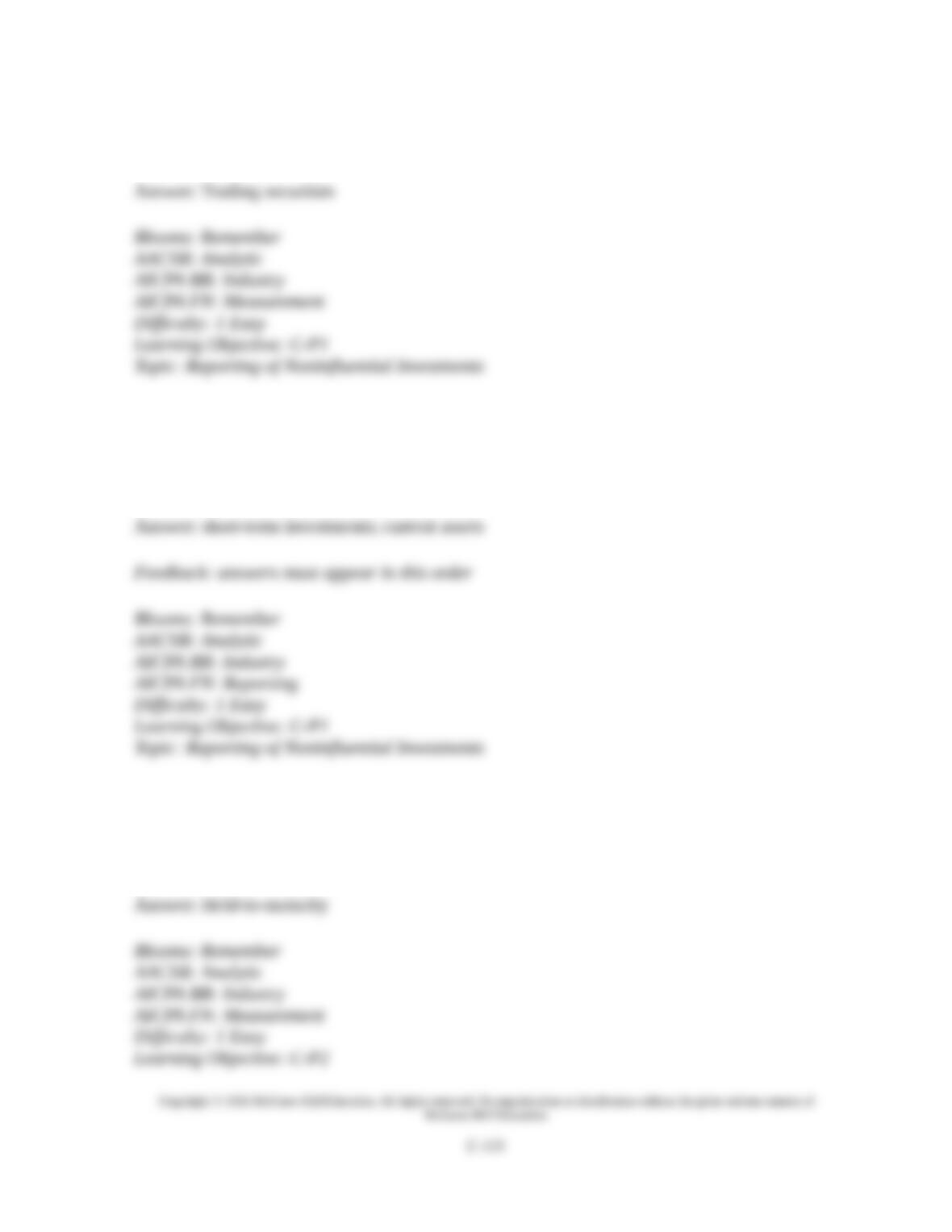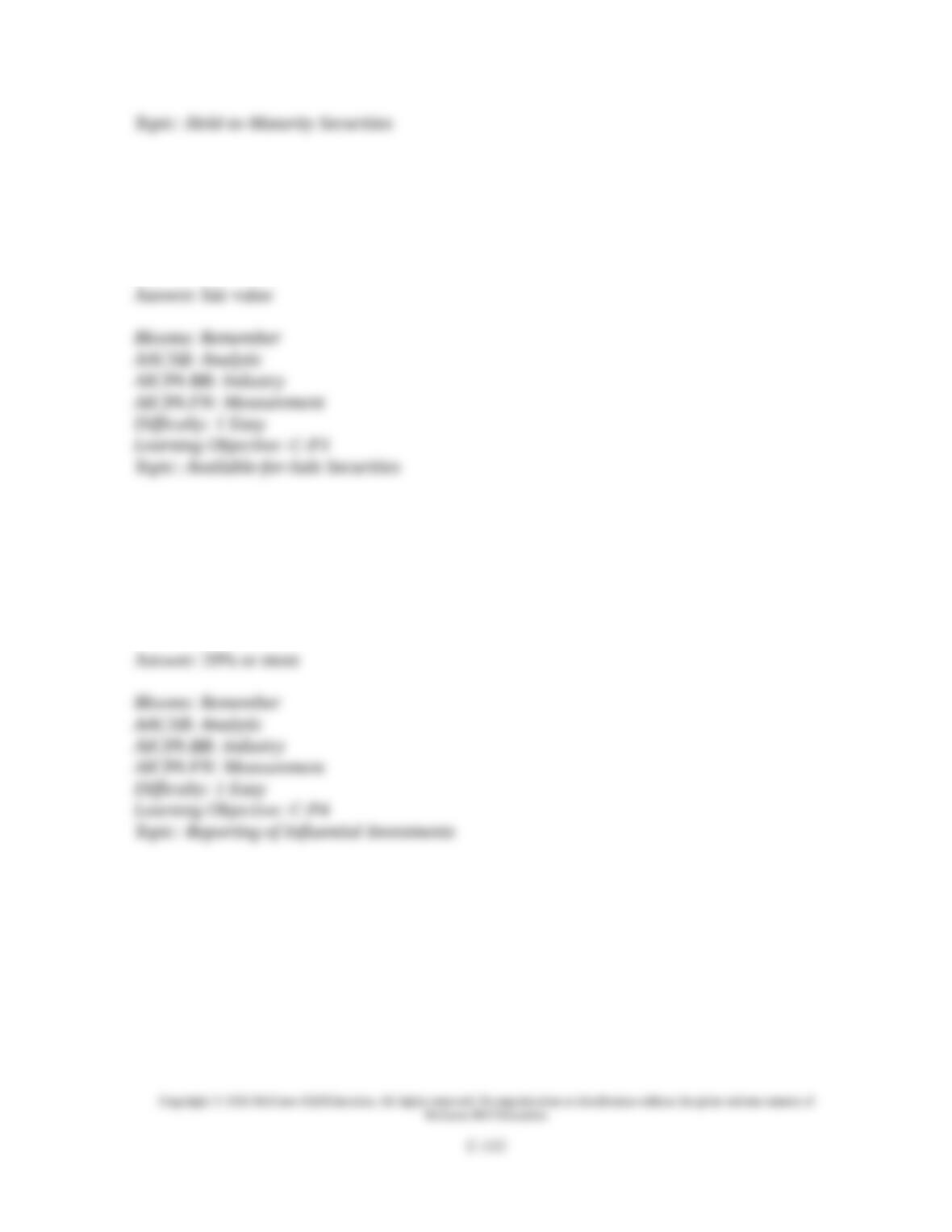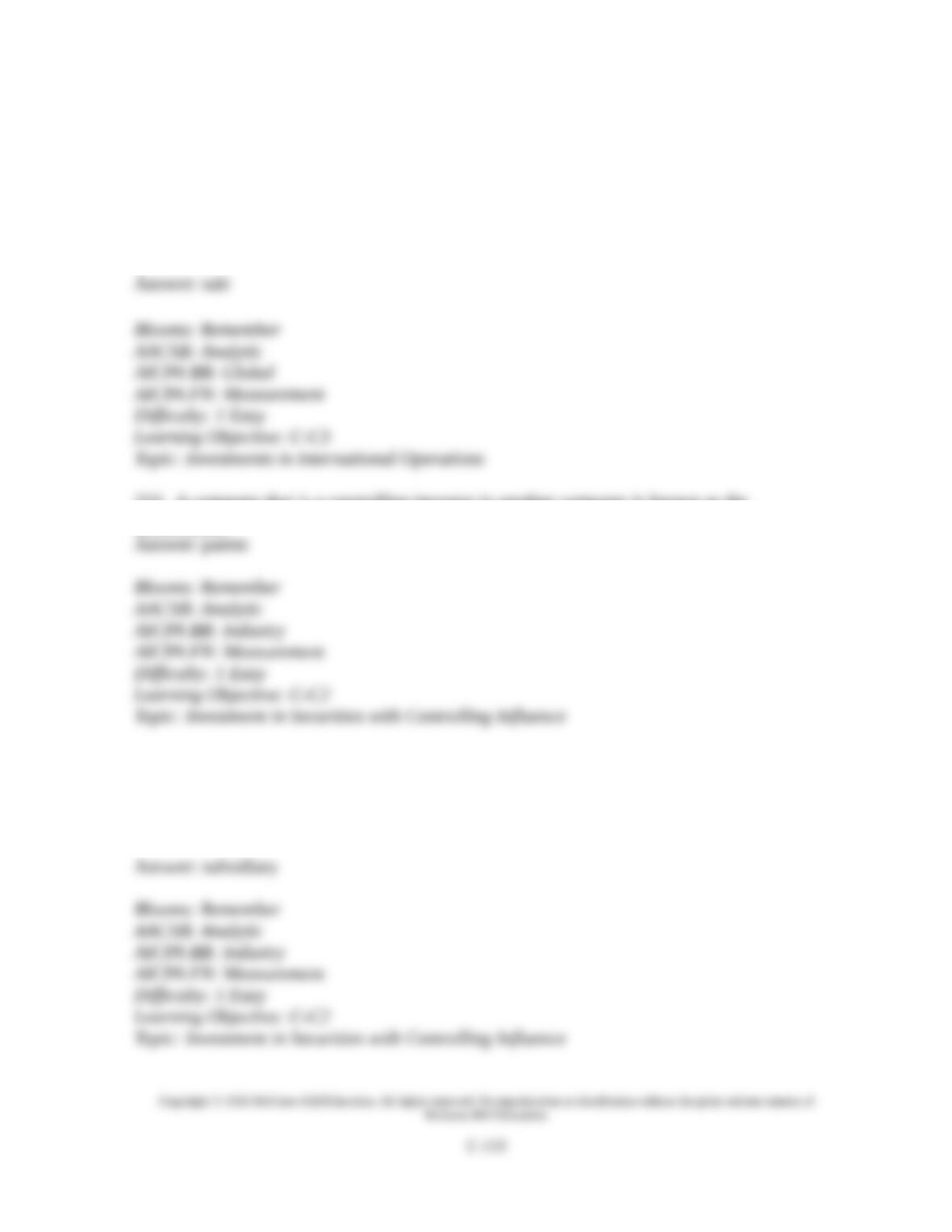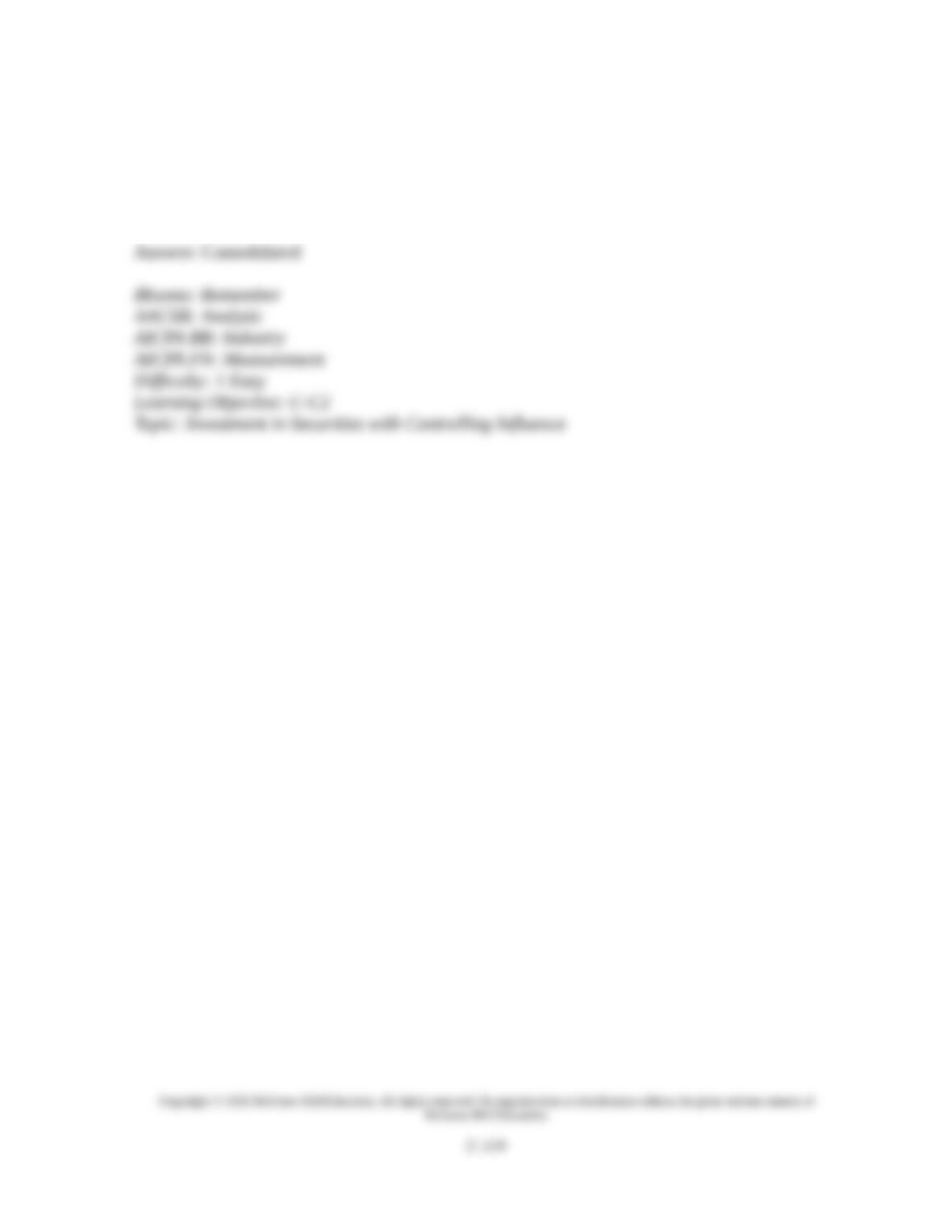181. Weston Company had the following long-term available-for-sale securities in its
portfolio at December 31, Year 1. Weston had several long-term investment transactions
during the next year. After analyzing the effects of each transaction, (1) determine the amount
Weston should report on its December 31, Year 1 balance sheet for its long-term investments
in available-for-sale securities, (2) determine the amount Weston should report on its
December 31, Year 2 balance sheet for its long-term investments in available-for-sale
securities, (3) prepare the necessary adjusting entry to record the fair value adjustment at
December 31, Year 2.
Available-for-Sale Securities (LT) Cost
Fair
Value
40,000 shares of Beach common stock........... $ 497,500 $ 488,900
15,000 shares of Danfield common stock....... 410,200 412,600
18,000 shares of Cardinal common stock....... 399,600 382,500
Jan. 22 Sold 9,000 shares of Cardinal common stock for $203,000 less a brokerage
fee of $850.
Mar. 17 Purchased 30,000 shares of Apex common stock for $995,000 plus a
brokerage fee of $2,500. The shares represent a 30% ownership in Apex.
Jun. 10 Purchased 108,000 shares of Desert Springs common stock for $1,525,000
plus a brokerage fee of $4,200. The shares represent a 54% ownership in
Desert Springs.
Nov. 01 Purchased 12,000 shares of Cliff common stock for $223,500 plus a
brokerage fee of $450. The shares represent a 10% ownership.
Dec. 31 At December 31, Year 2, the fair values of its investments are: Beach,
$502,500; Danfield, $411,800; Cardinal, $203,100; Apex, $1,113,250; Desert
Springs, $1,576,000; Cliff, $224,750.

























































































